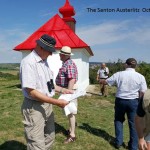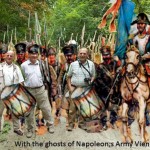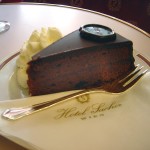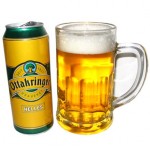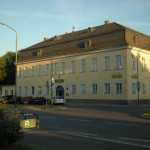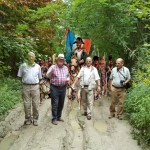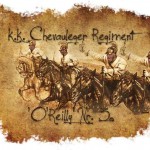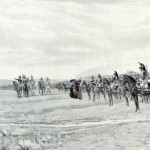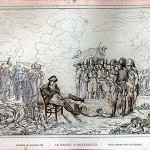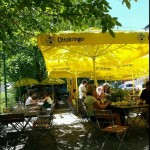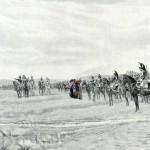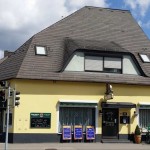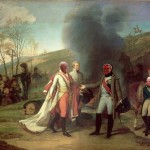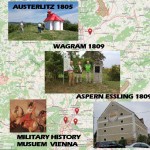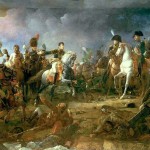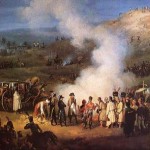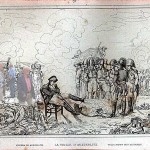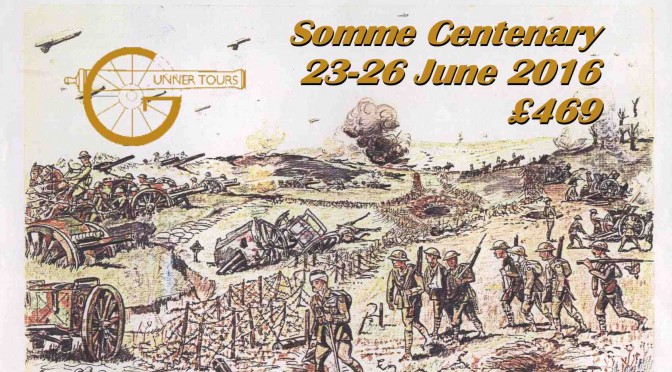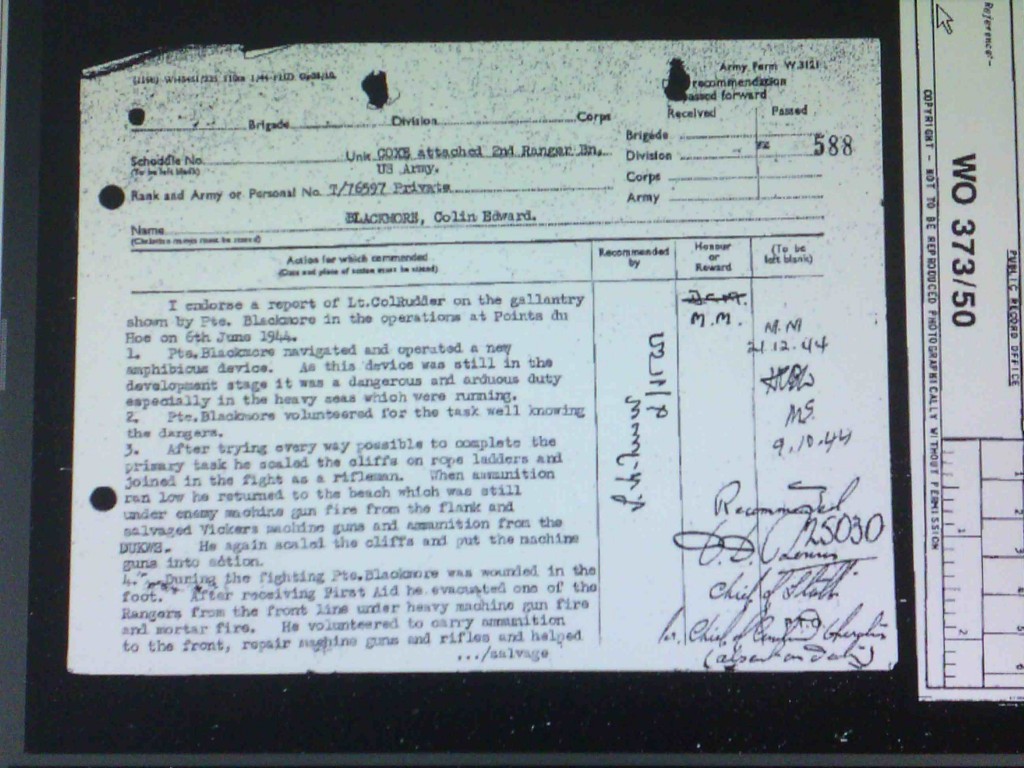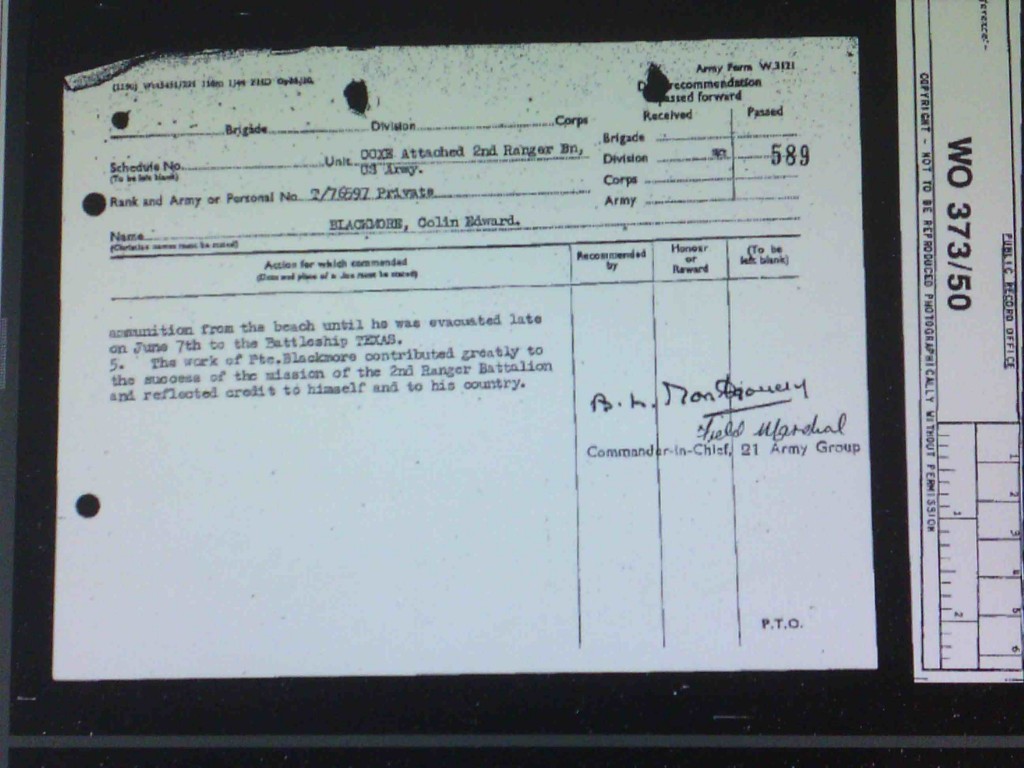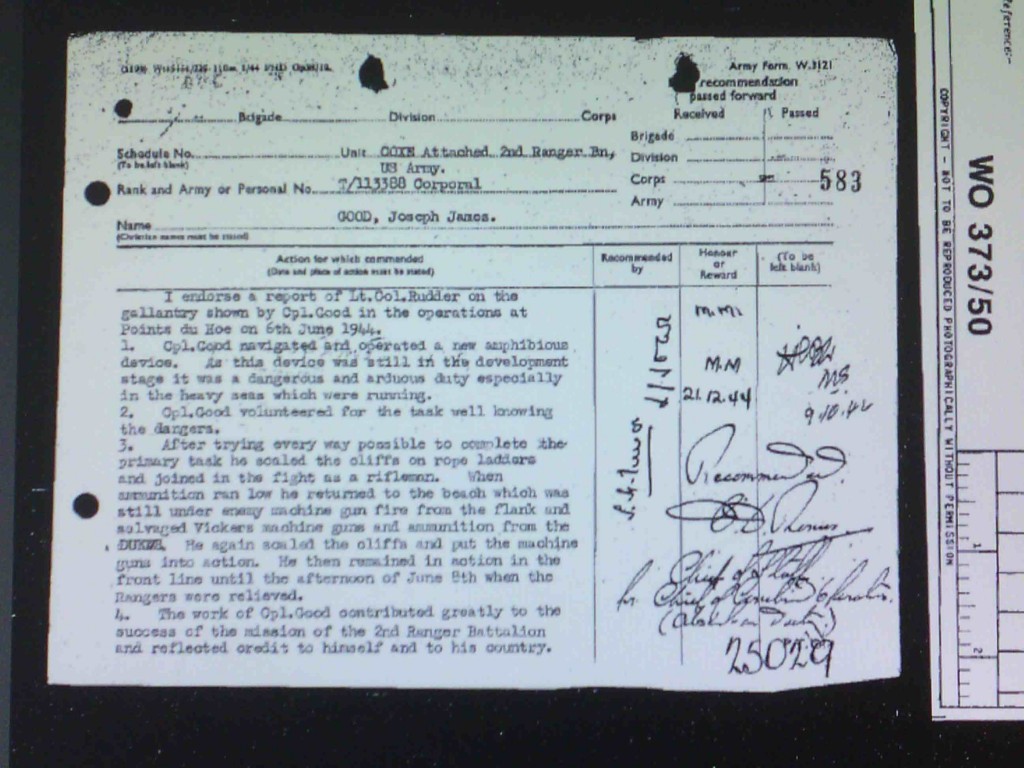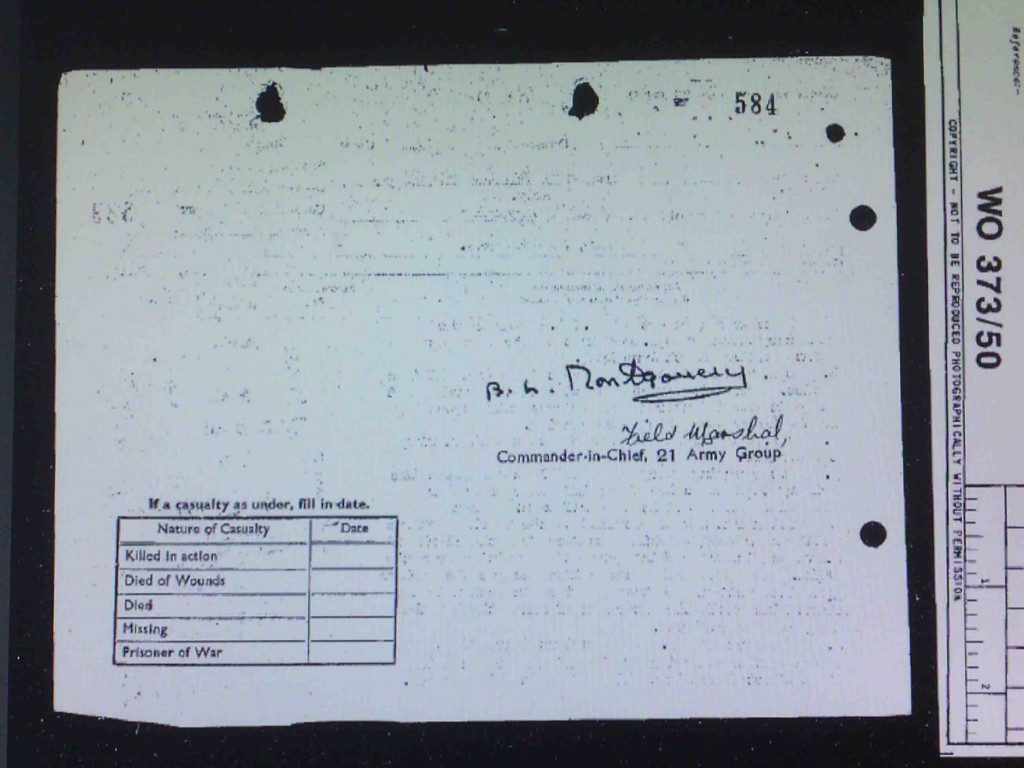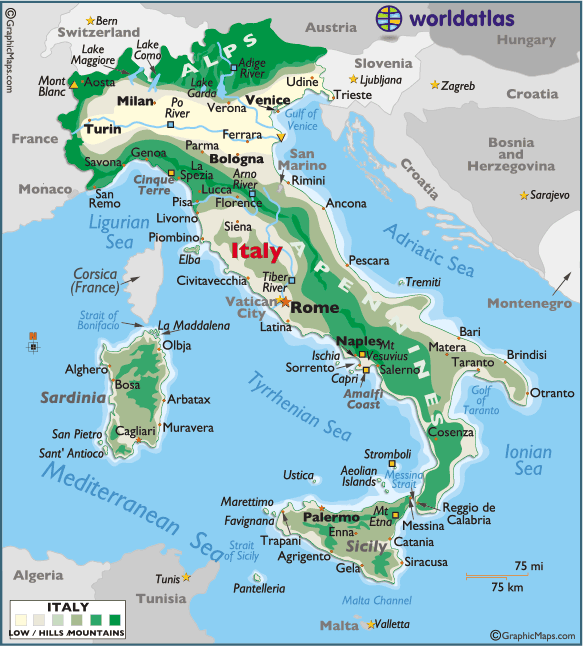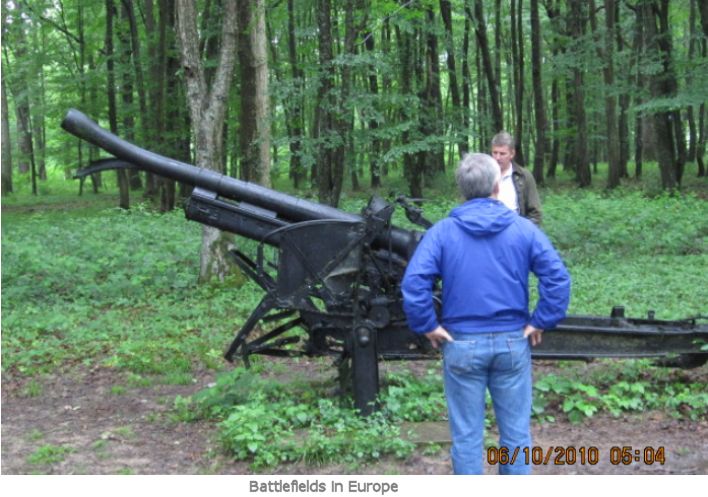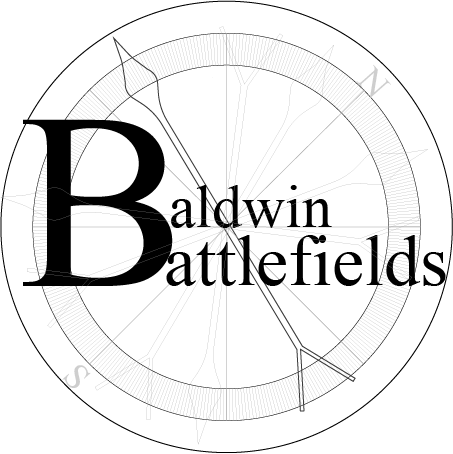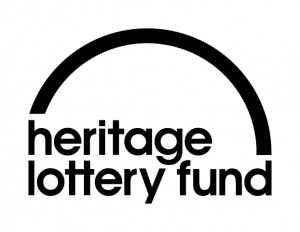Tag Archives: Battlefield Guide
Gunner Tours 2016 Programme
The biggest commemorative battlefield event in 2016 will be the Centenary of the Battle of the Somme. Our tour commemorates the start of the battle, which was the opening barrage 24 June. We are also offering a proven Normandy and West Front tour that tells the Gunner side of these
The Somme Centenary, 23-26 June 2015 £469
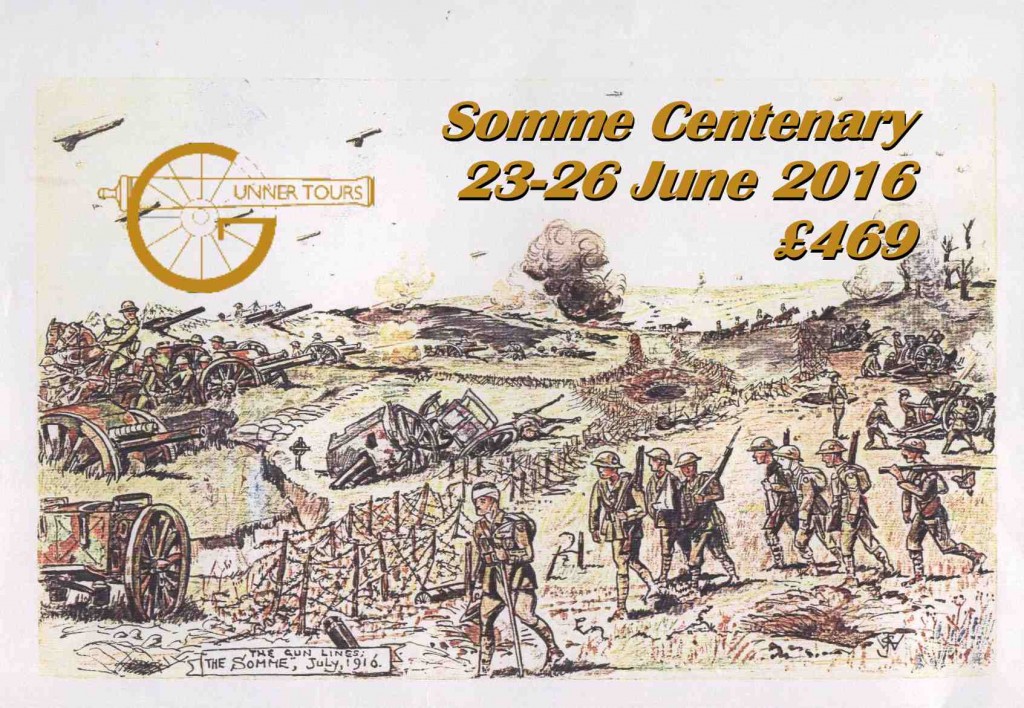 The Battle of the Somme began on 24 June 1916 – known as U Day. It was a dull day, low cloud and heavy rain, following thunderstorms the day before.It is a myth, showing much misunderstanding of a First World War battle, to believe it began with the infantry attack on 1 July.
The Battle of the Somme began on 24 June 1916 – known as U Day. It was a dull day, low cloud and heavy rain, following thunderstorms the day before.It is a myth, showing much misunderstanding of a First World War battle, to believe it began with the infantry attack on 1 July.
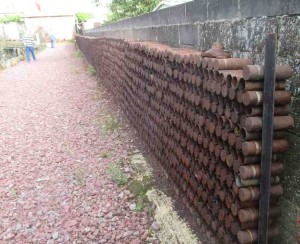
The Battle of the Somme is an iconic event in British memory of the First World War. But the Gunner side of the story tends to be overlooked. The Gunner Tout top the battlefield will visit places ignored by many visitors and tell stories not often told. This is the story of the Royal Artillery in the Somme battles of 1916.
The main public interest in the battle is the staggering losses suffered by the volunteers of Kitchener’s Army on the first day. As one “Two years in the making. Ten minutes in the destroying. That was our history.”- the description of one Pals battalion.
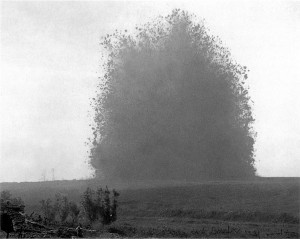
The Gunners don’t come out too well from the short version of the battle of the Somme. The largest ever concentration of British Artillery firing the largest ever barrage was supposed to cut the barbed wire in front of the German trenches, destroy German bunkers, defences and guns and keep the Germans heads down while the infantry advanced. But, over about eight out of thirteen miles of the front line attacked this did not happen, resulting in tragedy. We will show you why, and something of the efforts and sacrifices made by the Gunners to deliver the impossible,.
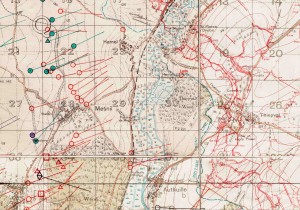
The tour has been based on research inspired by a project started by the late Will Townsend. It is based on research from original documents in the National Archives, Firepower Archives, the Historial de la Grande Guerre Château de Péronne and RUSI. We have brought together anecdotes and stories from a wide range of published and unpublished accounts by and about Gunners. We will have fire plans drawn by the future Field Marshall Lord AlanBrooke.
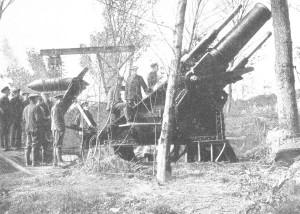
We will look at the French and German artillery too. Few Britons are aware of how closely the British and French artillery worked. Nor is the German experience well known- even thought the most enduring German memory of the Somme was probably how their trenches were stamped into the ground by the British guns.
We are going to travel the week before the national commemoration because that is when the battle started for the Gunners, and we will have a better opportunity to get around the battlefield.
The tour is four days and three nights and for more information follow this link.
D Day Beaches and Landing Sites, 2-5 September 2015 £389
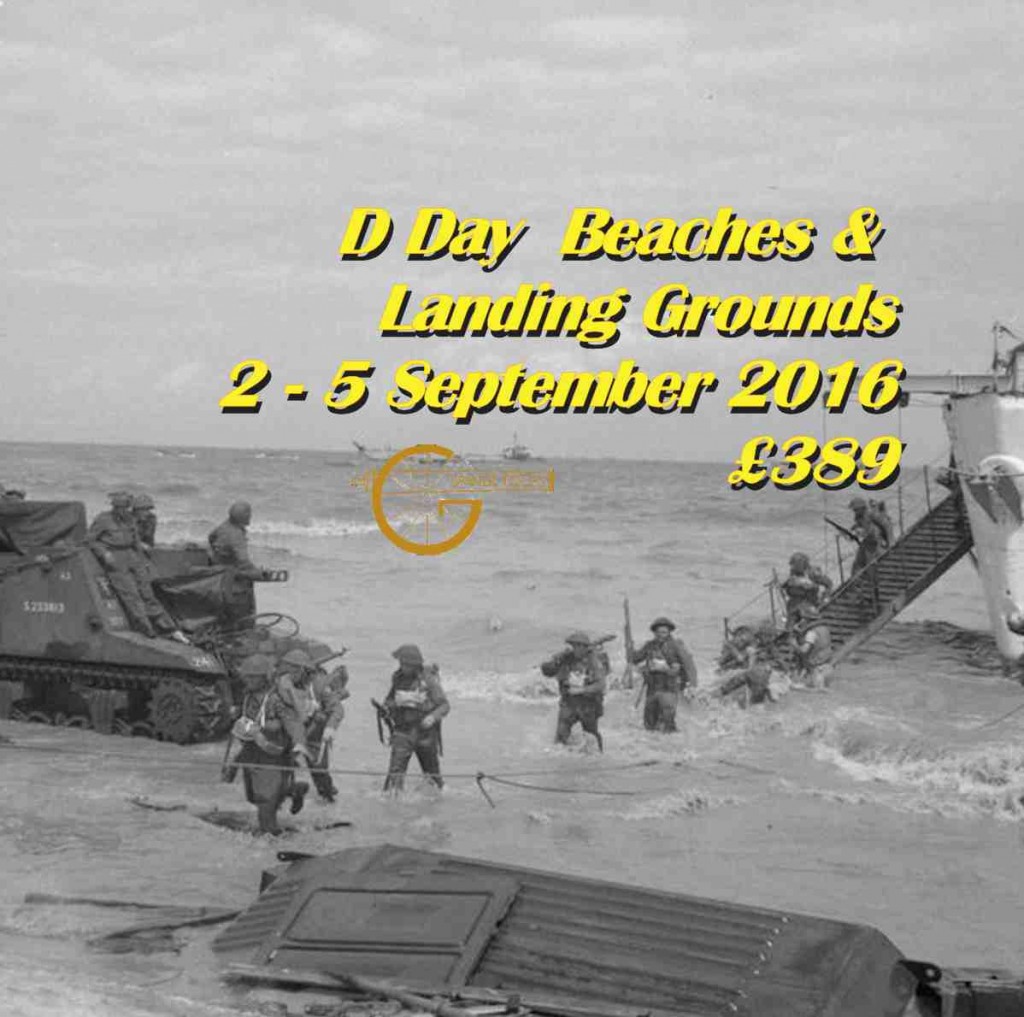
A visit over a long weekend to the D Day beaches and landing sites. There is a gunner story on each beach and landing site. We will see the strength of the German defences and see where and how the Gunners helped to overcome them. We will explore the stories of the Gunners who took part, the planners, commanders and soldiers, heroes, poets and those who fell.
£389 per person sharing single supplement £75
Details Here
BEF Western Front 10-14 November 2016 £469
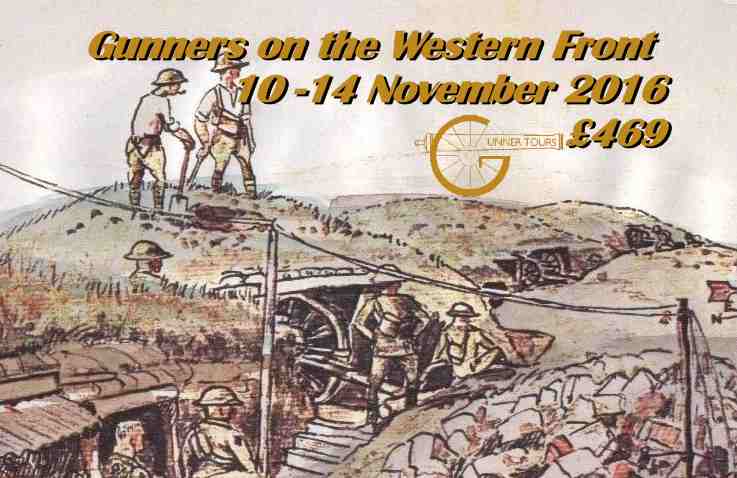 Five days and four nights, covering the sites of the major battles of the British Expeditionary Force from Mons in 1914 to victory in 1918 over Remembrance day 11 November.
Five days and four nights, covering the sites of the major battles of the British Expeditionary Force from Mons in 1914 to victory in 1918 over Remembrance day 11 November.
£469 per person sharing single supplement £110
Details here
Introduction to Battlefield Guiding City Lit Summer School Course 2014 12 July & 3 Aug 2014
The 2014 City Lit Summer School Introduction to Battlefield Guiding Course lasts for two days (12 July & 3 Aug) and is an introduction to the theory and practice of battlefield guiding. It is based on the competences of the Guild of Battlefield Guides validation programme, combining knowledge of military history, presentation skills and the duty of customer care. It is a taster for anyone seeking to lead walks or tours and wishing to plan a personal development programme. The course takes place at CityLit, Keeley St, Covent Garden, London WC2B 4BA
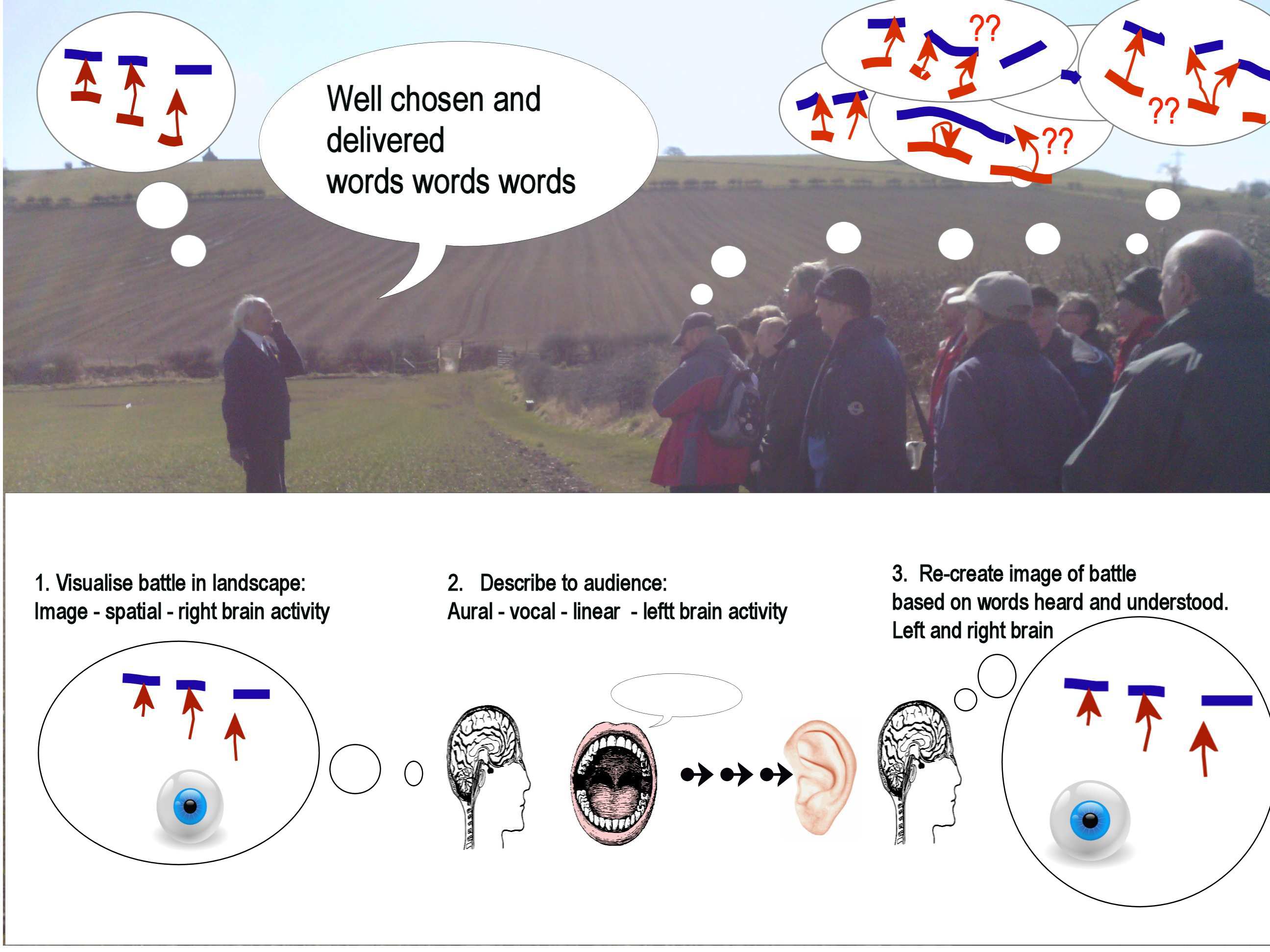
What is the course about?
The course is an introduction to the skills of battlefield guiding. It is aimed it people considering developing their skills either as a volunteer or a professional or for a professional tour guide seeking to extend their expertise to cover battlefields. The course is based on the competences of the International Guild of Battlefield Guide.(GBG) the trade body which assesses and awards its Badge to guides which demonstrate their competence through the Guild Validation programme. The course is intended to give students a start in developing the skills and competences to become battlefield guide.
What topics will we cover?
We will cover the following:-
- An introduction to battlefield guiding
- The GBG Badge competences and validation scheme
- Knowledge
- Presentation skills
- Duty of Care
- Legal obligations
- Working as a guide
- Developing a personal learning programme towards the Guild Badge.
By the end of this course you should be able to:
- Identify the obligations on the guide in providing a battlefield tour.
- State the key competences of the Guild of Battlefields’ validation programme and the standards of competences needed.
- Carry out your own simple self assessment of personal training needs.
- Plan you own personal development programme towards achieving the standards expected of a competent guide.
What level is the course and do I need any particular skills?
The course is set at the level of an intelligent lay-person with an interest in military history. Participants will need to have a general knowledge of military history.
How will I be taught, and will there be any work outside the class?
The instruction will be in the form of tutor presentations, class and group discussions, and interactive exercises. There will be homework and a practical assignment between the first and second day. Participants will be expected to prepare and deliver short presentations.
How much will it cost?
Full fee: £92
Senior fee: £60
Concession: £31
For an explanation of these fees check the Citylit Fee Information
How can I enrol for the course?
You can enrol for the course book a place in the following ways:-
- Online via this page (or print and post the enrolment form)
- Over the telephone 020 7831 7831
Comments from Past Students
“Excellent Course”
“Could not be improved”
“Practical focus, linked to personal opportunities and encouraged further study and involvement”
“ A good balance of relevant subjects”
“The content was wider and in greater depth than I had expected”
“ I learned a hell of a lot”
While the learning outcomes were set at an introductory level, the course reported the following outcomes.
| ADDITIONAL LEARNING OUTCOMES | % Agreement | |
|
80% | |
|
70% | |
|
50% | |
|
30% | |
|
90% | |
|
90% | |
|
90% | |
|
100% | |
|
90% |
Pointe Du Hoc: the Unlikely British Heroes
The attack on Pointe du Hoc by the US Rangers on D Day is a famous episode in the history of the cross channel invasion. On 6th June 1944 the US 2nd Ranger Battalion stormed 30m (100 ft) high cliffs to capture a German artillery battery which had to be neutralised. The action featured in the 1961 film “The Longest Day” and in many TV documentaries. The mission epitomised the Rangers ‘s ethos, inspired by the British Commandos. Few people are aware that along with the US Rangers some British logistics soldiers played an important and heroic part in the operation and were awarded medals for gallantry.
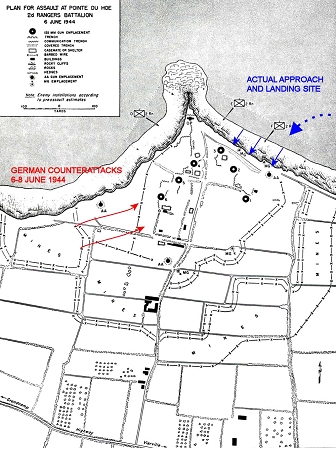 On Pointe du Hoc, the Germans had built, as part of the Atlantic Wall, six reinforced concrete case-mates to house a battery of captured French 155mm guns. Pointe Du Hoc was on a headland situated between Utah Beach to the west and Omaha Beach to the east. These coastal defence guns threatened Allied landings on both beaches, risking heavy casualties in the landing forces. Although there were several bombardments from the air and by naval guns, intelligence reports assumed that the fortifications were too strong, and would also require attack by ground forces. The US 2nd Ranger Battalion was therefore given the task of destroying the strong point early on D-Day.
On Pointe du Hoc, the Germans had built, as part of the Atlantic Wall, six reinforced concrete case-mates to house a battery of captured French 155mm guns. Pointe Du Hoc was on a headland situated between Utah Beach to the west and Omaha Beach to the east. These coastal defence guns threatened Allied landings on both beaches, risking heavy casualties in the landing forces. Although there were several bombardments from the air and by naval guns, intelligence reports assumed that the fortifications were too strong, and would also require attack by ground forces. The US 2nd Ranger Battalion was therefore given the task of destroying the strong point early on D-Day.

Prior to the attack, the guns were moved approximately one mile away; however, the concrete fortifications were intact, and would still present a major threat to the landings if they were occupied by artillery forward observers, which could still direct the fire of the guns.

Assaulting the 100 ft rocky cliffs was expected to be a tough challenge. This was rather similar to the problem facing armies scaling city or castle walls. If the Germans were at all alert they could rain fire down on men climbing rope ladders. The operation was planned to take place shortly before dawn in order to achieve surprise.
The Rangers planned to use a secret weapon to help them climb the 100 ft cliffs quickly; the modern equivalent of a siege tower. DUKW amphibious 2 ½ ton trucks were fitted with the turntables from London Fire engines and machine guns fitted to the top of the ladder. The idea was that the DUKW would land on the small beach below the cliffs, extend the ladders and the Rangers would rush up the ladders, which were easier to climb than ropes or rope ladders. This was tried and practiced on training exercises on the South Coast.
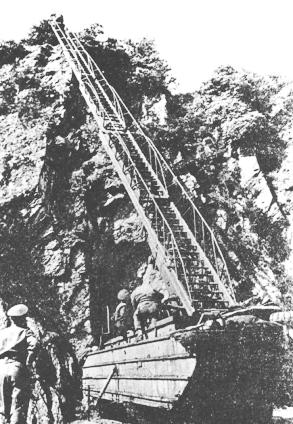
On D Day itself the plan didn’t work out as well. Firstly due to a navigation error, the assault took place later than scheduled. Instead of landing in the dark the convoy travelled for some way along the cliff in full view of the now very alert German defenders.
The landing took place at a higher tide than planned. Secondly, the allied naval and air bombardment had brought down some of the cliff and created a heap of rubble in front of the cliff. It proved impossible to get the extendable ladders in place or a firm footing for the DKUW. One account describes a Ranger manning the machine guns on an oscillating ladder firing at the Germans when the ladder passed through the highest point of each roll.

The Rangers assaulted the cliffs using rope ladders launched up the cliff with rockets. Despite the Germans throwing hand grenades and shooting at them from the cliff edge, the Rangers were successful. They cleared the battery, found and destroyed the guns themselves, which were about a mile inland and started what proved to be a 48 hour battle to fight off German troops counter attacking.

The DUKW drivers were RASC drivers. The fire engine ladders mounted on the cargo bay of the DUKW made them top heavy and harder to control, especially in the heavy seas on D Day. Navigating and operating these amphibious vehicles was a difficult and arduous duty performed with skill. But this isn’t the end of their story.
At least two of the DUKW drivers, Corporal Good and Private Blackmore, scaled the cliffs using the rope ladders and joined the Rangers in the fight as riflemen. When ammunition was running low they went back down the cliffs and recovered machine guns from the DUKWs, which were under fire. They then returned up the cliff and brought the machine guns into action.
Pte Blackmore was wounded in the foot. After receiving first aid, he then returned to the front line and rescued a badly wounded Ranger under machine gun and mortar fire. He then volunteered to carry ammunition to the front line, salvage ammunition from the beach and repair weapons until he was evacuated on 7th June.
Cpl Good remained with the 2nd Rangers until Pointe Du Hoc was relieved by a force arriving by land from Omaha Beach to the East on 8th June. As you can see Pte Blackmore was originally recommended for a DCM, the second highest British Medal for Gallantry, but it was downgraded to an MM.
Colonel Rudder, the Commanding Officer fo the 2nd battalion US Rangers recommended that the actions of these two soldiers should be recognised. Corporal Good was awarded the Military Medal Private Blackmore was recommended the Distinguished Conduct Medal, but was awarded the Military Medal.

For most of the British assault troops on D Day, the fighting on the beach was over within a few hours. These two RASC soldiers fought one of the longest infantry actions undertaken by the RASC in North West Europe. They fought alongside specially selected, commando trained US Rangers in one of the actions which defined the US Ranger ethos. They are the exemplar of soldier first tradesman second and deserve to be role models.
When I first heard about this story I tried to find out what training these men would have received. The US Rangers and the British Army Commandos on which they were based were specially selected raiders expected to undertake physical feats not normally expected of ordinary soldiers, such as for example, such as scaling 100′ cliffs under fire. However, according to Andy Robertshaw, the Curator of the Royal Logistics Corps Museum it is very unlikely that these men would have been given any Commando training. Their bit of the operation was to drive these amphibious trucks, top heavy with the extension ladders through heavy seas.
It is remarkable that these men, specially selected for their qualities as helmsmen and DUKW drivers, after what must have been an arduous and difficult voyage, then chose to join the Rangers in their fight. I cannot find any pictures of these every-man heroes and been unable to trace any relatives or old comrades. The Sustainer magazine, the Journal of the Royal Logistics Corps published this article in their Winter issue Their story deserves to be more widely known.
There are a lot more men like Corporal Good and Blackmore, who served in many different roles, doing their bit. If you are interested in finding out more about other forgotten heroes please contact me and I can help you to find out more and where to visit the places where their did their bit..
70th Anniversary of the Second Front – Italy 3rd September 1943
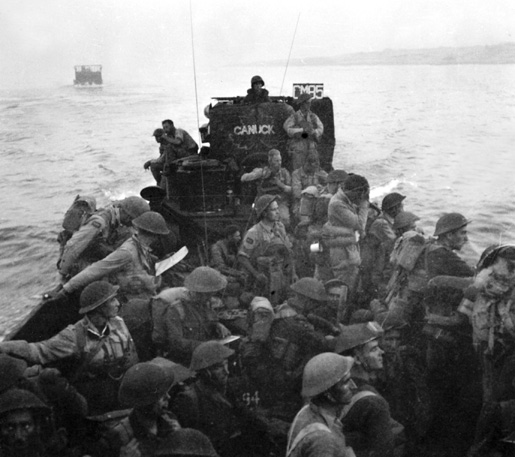
The 3rd September was the 70th Anniversary of Operation Baytown, the landings by the 8th Army on the toe of Italy. It was largely unremarked in the press, even in Britain.
Operation Baytown was the first landing in force by the western allies on the mainland of Europe. The landing was largely unopposed and the Germans withdrew leaving blown bridges and felled trees. It has been overshadowed by the Anglo American landings at Salerno on the 9th September which faced a week long battle before the Germans withdrew – as the 8th army drew close.
The Italian campaign lasted for twice as long as operation Overlord, the allied invasion of North West Europe, which overshadowed it. The campaign cost the Allies around one third of a million casualties and the Germans over half a million, as well as an estimated 150,000 Italian lives. The campaign included several controversial episodes, with the battles to prise the Germans out of their positions in the winter of 1943-44 giving rise to the battles for Monte Cassino and the destruction of the abbey and to the landing at Anzio. The conditions around Monte Cassino were compared by several participants as reminiscent of the Western Front battlefields of the First World War. Many commentators have been critical of Allied generalship in the campaign, with US General Mark Clark and British General Harold Alexander singled out.
The value or otherwise of the actions and sacrifices of those who fought in the Italian campaign has been coloured by the counter factual debate about whether Italy should have been invaded at all. From their entry into the war in December 1941, the US Army Chief of Staff Marshal had been pressing for an allied cross channel assault at the earliest possible opportunity and resisted British calls for activity in the Mediterranean.
This determination of the US Army to try to open a second front in Europe ASAP may have been influenced by several factors. 1) Europe was the only place that the huge 100 division US Army could be deployed. 2) If the Army did not put up a convincing argument that it would use the resources in a sensible time frame, the priorities would be switched to the US Navy or USAAF. It was politically unacceptable to argue “Germany first” while doing nothing for two to three years. 3) This was a coalition and the Red army, in 1941-43 looked as if it needed urgent help to defeat the Germans. The US army expected setbacks and to take losses and were prepared for initial failures. Their historic tradition and models were based on the US Civil War and “Bull Run” “Fredericksburg ” and Chancellorsville were part of a learning experience that led to Appomattox via Gettysburg and the Wilderness. The US had not been a major participant in WW1 and military planning could be quite callous by Western European standards.
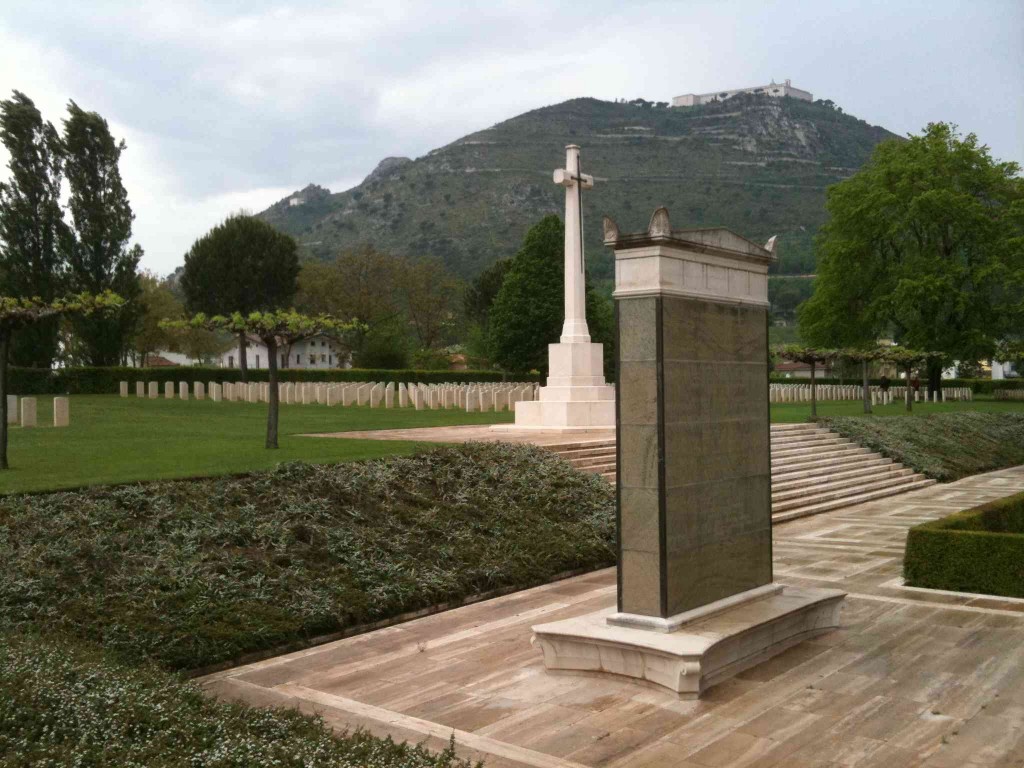
Lets return to the C word. The US were part of a coalition, with the British as partners. The British were horrified at the risks the Americans proposed to run in 1942 and 43. (Brooke, who liked and admired Marshall, wrote of interrogating Marshal about what he wanted to do with a ten division landing in Northern France in 1942. What direction did he want to exploit? etc.) Brooke did not appear to grasp the scale and simplicity of the US plan: Mobilise and deploy 100 divisions to France where they can fight the Germans – France because that’s the only space big enough in Western Europe. If the first ten divisions were defeated there was another 90 and the resources of America mobilised for a crusade. This wasn’t an approach the British could afford to take. The British had already been kicked out of Europe on three occasions (France Norway and Greece), and were at the limits of their resources. To the British; the American plans all seemed to ask the British to deploy their last army in Europe on a series of risky ventures where the initial casualties would be disproportionately British.
Coalitions need to find plans which satisfy their partners or they fall apart. The compromise achieved by the Joint Chiefs of Staff of two democratic governments was remarkably effective. The solution adopted was very successful, and worked out far better than the US planners might have expected. There was simply no prospect of a successful D day until the U Boats had been driven from the Channel, which was not until May 1943. It is hard to see a 1942 D Day as anything other than a bigger version of Dieppe, which is also the likely fate of a 1943 battle for Normandy mounted with the troops available in Europe in July 1943 and Italy still in the war.
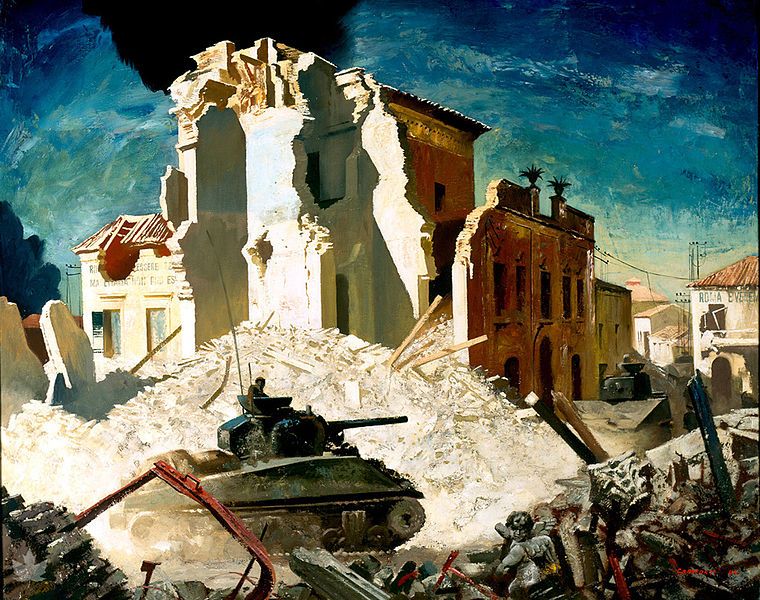
The historic development of the war worked out far better. The North African campaign allowed the US Army to be blooded where the geography and resourced favoured the allies. The setback at Kasserine pass was not fatal. The US could deploy and test a First IX (Eisenhower, Patton, Bradley, Truscott, etc) with manageable numbers of troops. The rest of the Tunisian campaign allowed the US Army the time to learn and apply lessons. A similar set back on the French coastline might have ended up with the entire army in the bag. The invasion of Sicily allowed the allies to try out the techniques they would need for Overlord, against a modest outnumbered enemy. Op Husky was a huge strategic success. It was cited by Hitler as his reason for abandoning his 1943 offensive in Russia (Op Ziterdelle) at a point where some commentators have argued that his forces were on the brink of victory.
The Italian campaign was a second front on the mainland of Europe. The invasion of Italy took Italy out of the War and opened a second front which absorbed a German Army Group of 20+ divisions and forced the Germans to deploy a further 20+ divisions in SE Europe to to take on the occupation activities undertaken by the Italian army. The Italian campaign was fought in a geographically remote peninsular, which enabled the allies to deploy a single Army Group of 20 Divisions into Europe without the Germans being able to mass the resources to throw the allies into the sea.
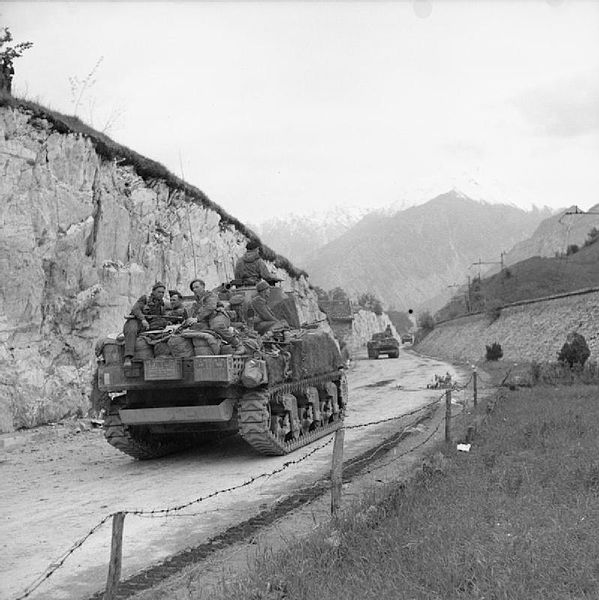
The troops involved in the Italian “side show” disproportionately damaged the Germans more than the Allies. The key battle for Op Overlord was to secure a lodgment area where the remainder of the US Army could be deployed direct from the USA – the Normandy campaign. The balance of forces available in the Normandy campaign was the result of a race to build up forces between the Allies using sea and air and the Germans, by road and rail. The Allies had a lot more troops , but could only limited shipping. The Germans had fewer troops in total, but it was easier for them to be concentrated. The allies won the battle for the build up and after an attritional battle lasting seven weeks the Germans ran out of troops to plug gaps and the Allies broke out. The 20+ divisions German troops in Italy and the casualties incurred throughout the campaign were not available on D Day in France to fight the crucial battle. Even if the troops of the 15 AG not been deployed in Italy, they could not have been used at the lodgement phase of Op overlord, because the number of troops was limited by shipping capacity. Even at the end of the Normandy campaign there were many US Divisions forces still waiting to be deployed. (E.g. (99th 100th & 106th ID 9th, 10th & 11th AD). If there had been no Italian campaign there would just be more US troops waiting to be shipped.
There is a parallel with the US Civil War. Arguably the war was won in the West, with the Confederate states split and dismembered by larger Union forces. The Eastern campaign, (and various incursions along the coast) however inconclusive, tied down CSA troops that might otherwise have made a difference on the West. Given that the Union had the preponderance of forces, it made sense to deploy on as many fronts as the CSA could be forced to deploy their smaller resources.
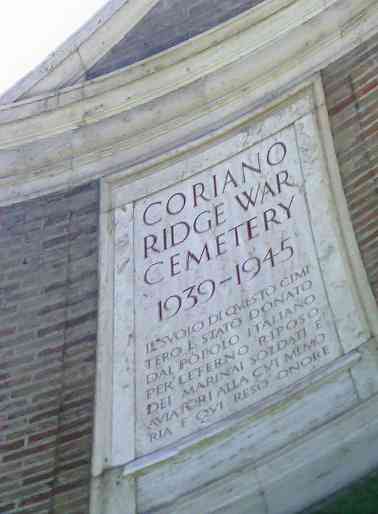 Instead of looking at the Italian campaign as a side show, it might be more constructive to consider it as a successful diversion, which succeeded in tying down Germans which might have made a difference elsewhere. it did not matter to the allies for this purpose exactly where they were fighting the Germans in Italy. Sure the air force wanted bases near Foggia, but whether the battle was North or South of Rome only really mattered to Mark Clark – and the Italians themselves. Whatever faults there might have been in the execution of allied operations around Monte Cassino, the overall aim was achieved. On D Day there were hundreds of thousands of German combat troops in Italy and even some en route from France. The battles around Monte Cassino played their part in defeating the Nazis and liberate Europe.
Instead of looking at the Italian campaign as a side show, it might be more constructive to consider it as a successful diversion, which succeeded in tying down Germans which might have made a difference elsewhere. it did not matter to the allies for this purpose exactly where they were fighting the Germans in Italy. Sure the air force wanted bases near Foggia, but whether the battle was North or South of Rome only really mattered to Mark Clark – and the Italians themselves. Whatever faults there might have been in the execution of allied operations around Monte Cassino, the overall aim was achieved. On D Day there were hundreds of thousands of German combat troops in Italy and even some en route from France. The battles around Monte Cassino played their part in defeating the Nazis and liberate Europe.
I think this might be a better way to remember the remember the sacrifices of the soldiers who fought and died in the Italian Campaign.
Hitler’s Image on the Cathedral and Other Military Heritage in Barcelona

People do not normally visit Barcelona for its military history. It’s more associated with Catalan culture, football, art, architecture, tapas bars, beaches and clubs. But it also has some interesting military history, starting with the legend of its foundation by Hamlicar Barca, the Carthaginian General who fathered Hannibal, and the archaeological evidence of the Roman Colonia founded for ex-Legionaries. There are at least three episodes from its past which are well worth exploring.
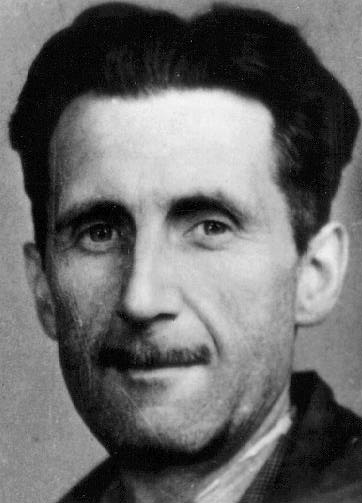
The most visible is the legacy of the city’s role in the Spanish Civil War when it was a staunch supporter of the Republican side. The army’s coup attempt in the city in 1936 was defeated by the armed trade union militia, paradoxically mainly by well organised anarchists. The city became the capital for the Republic after Madrid came under ground attack. One of its most popular streets, the Ramblas, became the front line in the civil war within the civil war between the Stalinist, Trotskyist and anarchist militias. The British Volunteer, Eric Blair was stationed on the rooftops on the Ramblas. His experiences and disillusionment became the inspiration for the works he published as Animal Farm and 1984 under the name George Orwell.
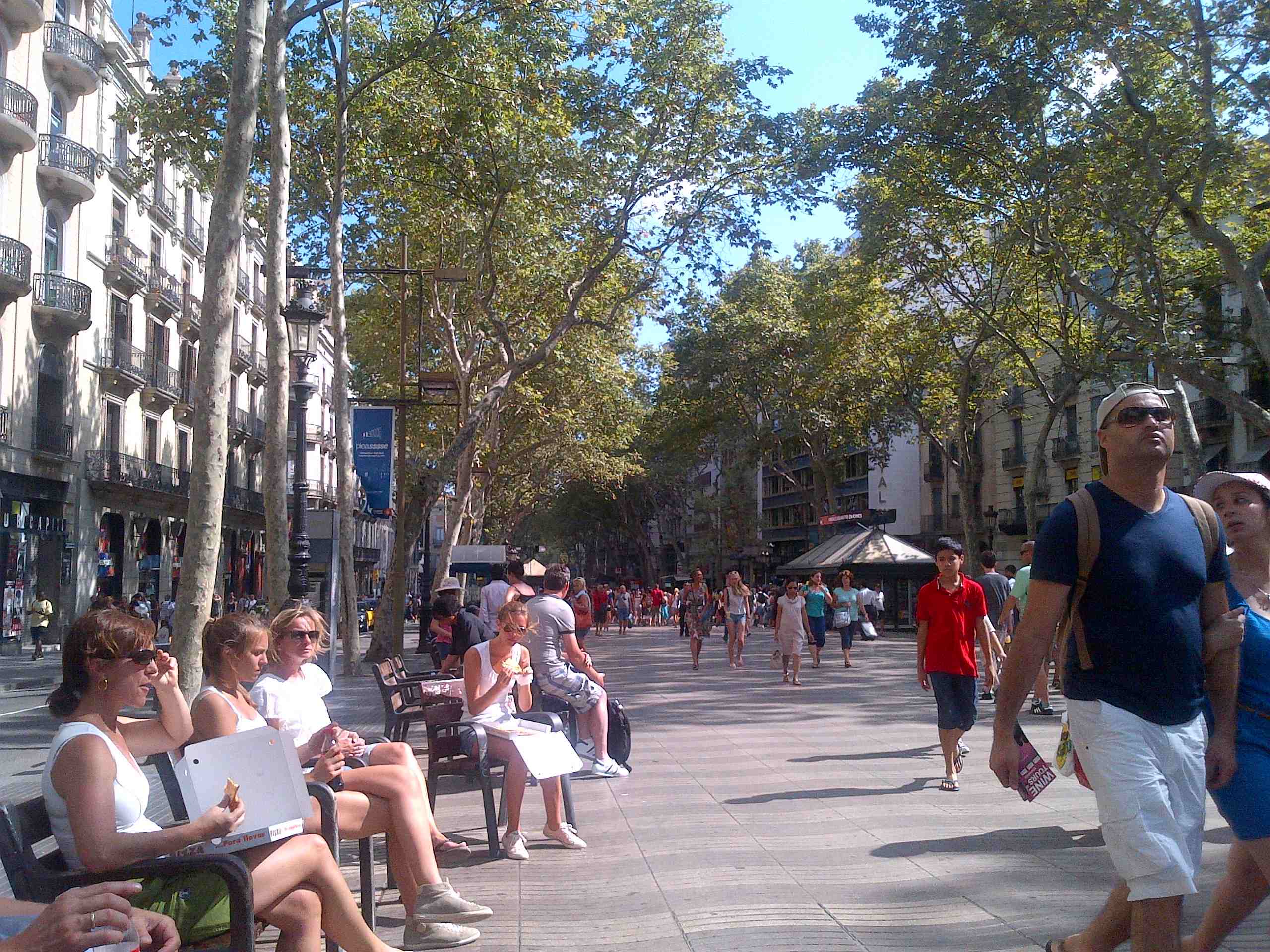
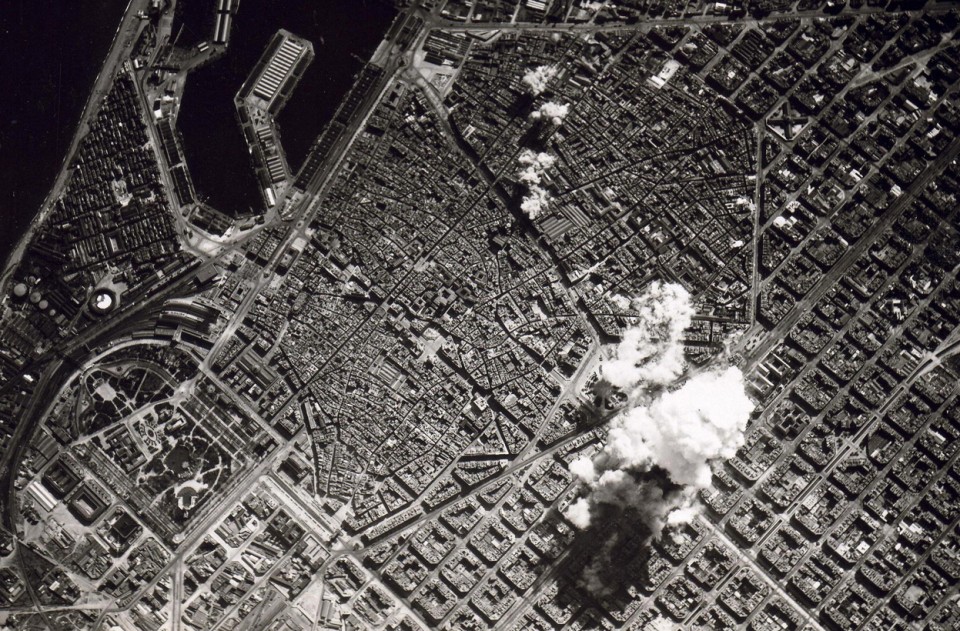
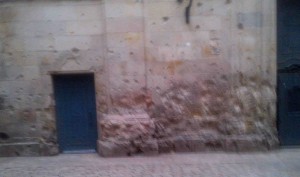
The bitter and sad story of the Spanish Civil War deserves to be better known. It is much more complicated than a simple story of good versus evil or communists against fascists. The evidence of the savagery and cost of the war is visible across the city. The bomb splintered façade of the church of Sant Felip Neri is witness to the deaths of 42 civilians, mainly children, when Italian aircraft bombed the city in March 1938. The damage to the Gaudi Church of the Sagrada Família and the barren church interiors are a reminder of the bitter anti clerical passions among the Republicans. The names in Fort Montjuïc mark the cells where Republican political leaders were held, tortured and executed, in Franco’s post war campaign to exterminate political opposition. It is still a sensitive topic across Spain, and avoided in the aftermath of Franco’s death, while the country made a transition to Democracy and EU membership.
The Spanish Civil War is a case study with lessons for the modern world. The debate about whether, when and how the world should intervene in a civil war is a live and current concern with images from Egypt and Syria in the media.

Fort Montjuïc on the hill south of the city and port was key to the defence of the city. It was the site of the oppida, the pre Roman site. In the Catalan wars of the 1640s the hill was fortified by the inhabitants and key to protecting the city from attack. In the war of Spanish

Succession 1705 Barcelona surrendered after the Anglo imperial forces assaulted the fort and it played a key part in the recapture of the city by the Bourbons in the siege of 1713-14. The fort is in an excellent position and well preserved, with coastal artillery batteries with C19th and C20th guns. The fort held a military museum assembled in the Franco era until 2009, when the collection was disbursed, which may itself indicate the sensitivity of the Civil War. The fort can be reached by a combination of cable car and funicular railway from Parallel metro, or via the cross harbour cable car from Barceloneta, by bus or walking.
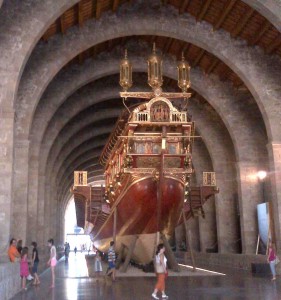
The city’s maritime museum is a gem with links to one of the most important naval battles in history. The museum is in the old Royal Catalan and Spanish naval ship yard where merchant and war ships were built in a Gothic stone building. The museum contains a replica of the 235 tonnes, 60m “Real,” the galley which served as the flagship of Don John of Austria, at the battle of Lepanto in 1571. The original Real had a crew of 400 sailors and soldiers in addition to 290 oarsmen and was armed with three heavy and six light cannons.
The battle of Lepanto was one of the largest and most significant naval battles in history and took place in the Ionian sea off Greece on 7th October 1571. 212 ships of the Holy League (Spain, Venice and the Papal states) under Don John, manned by 28,500 soldiers and C 25,000 sailors and oarsmen faced 250 Turkish ships manned by 31,400 soldiers and 50,000 sailors and oarsman under Ali Pacha. This is more ships and men than took part in the largest naval battles of Jutland (1916) and Leyte Gulf in the C20th World Wars and approximately eight times as many ships and men as took part in the famous battle of Trafalgar (1805)
At Lepanto the Real engaged the Turkish galley Sultana, flagship of Ali Pacha in deck to deck combat. The Spanish troops boarded the Sultana and after about an hour of bloody fighting captured her. Ali Pacha was severely wounded by musket fire, fell to the deck, and was beheaded by a Spanish soldier. His head was displayed on a pike, severely affecting the morale of his troops. The Real captured the “Great Flag of the Caliphs” and became a symbol of the victory at Lepanto.
The battle was a decisive victory for the Holy League. The Turks lost 80 ships sunk and 130
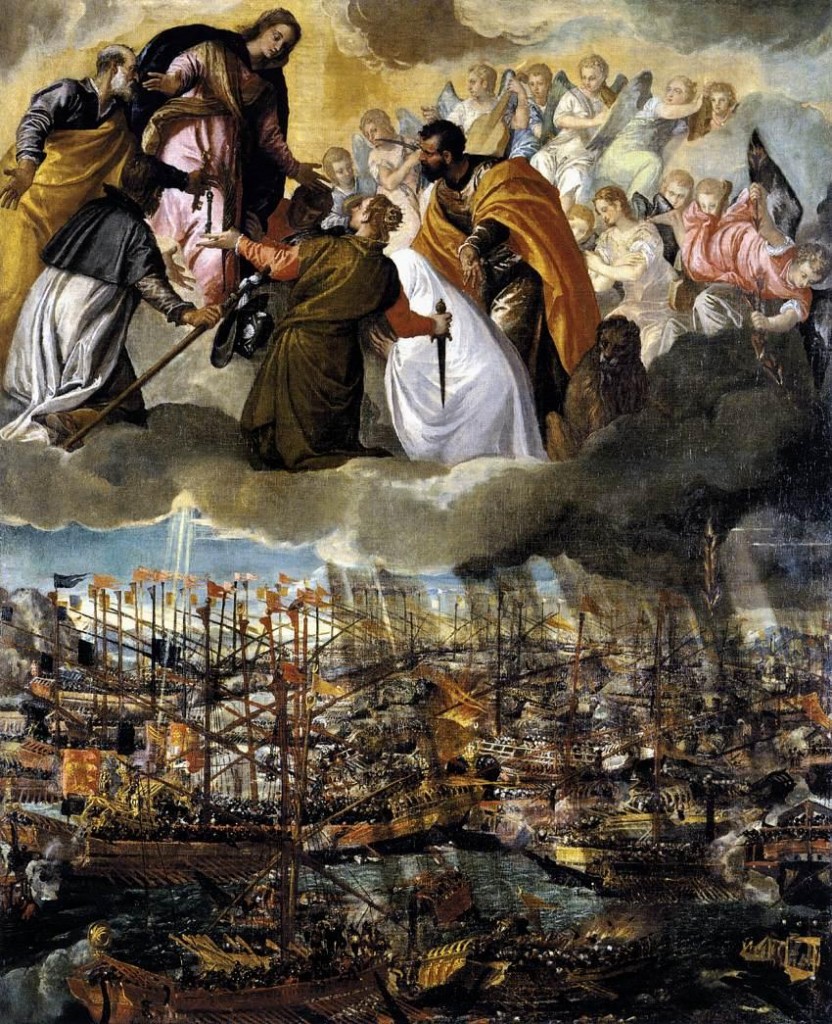
captured, with the loss of 20,000 Turks killed, captured or wounded and the release of 12,000 Christian galley slaves. One of the c.7,500 Holy League casualties was Miguel de Cervantes, the author of Don Quixote. The battle ended Turkish naval supremacy in the Mediterranean and inspired paintings and poetry. Barcelona Cathedral contains a further artefact from the battle of Lepanto, the Christ of Lepanto, carried in on a Spanish Galley. The body of Christ is supposed to have moved to avoid cannon shot during the battle!
Galley warfare of slaves at the oars, and hand to hand combat may seem archaic to Britons whose image of naval warfare is based on the kinds of sailing ships used by sea dogs from Drake to Nelson. But the battle of Lepanto took place 26 years after the English carrick, the Mary Rose was lost while engaging French galleys in the Solent and only seventeen years before the Spanish Armada.
The nearest Metro is Drassanes close to the Colon which commemorates the return of Christopher Columbus to Spain after his first voyage and reception by Ferdinand and Isabella. The Museum café is in a quiet garden with a fish-pond and is a good place to contemplate the war galleys which dominated naval warfare in the Mediterranean for over two millennia – or to take a break from sight seeing.
If you are interested in travelling to battlefield heritage in Barcelona or elsewhere in Span contact me via Baldwin Battlefield Tours
PS Hitler fought in Ypres in 1914. The Battlefield Trust is organising a fund raising event at lunchtime on 10th September 2013 with a lunch and a talk given by Col (retd) Christopher Newbould on the British Army at Wipers. Details here.
Forgotten battlefields of the Aisne
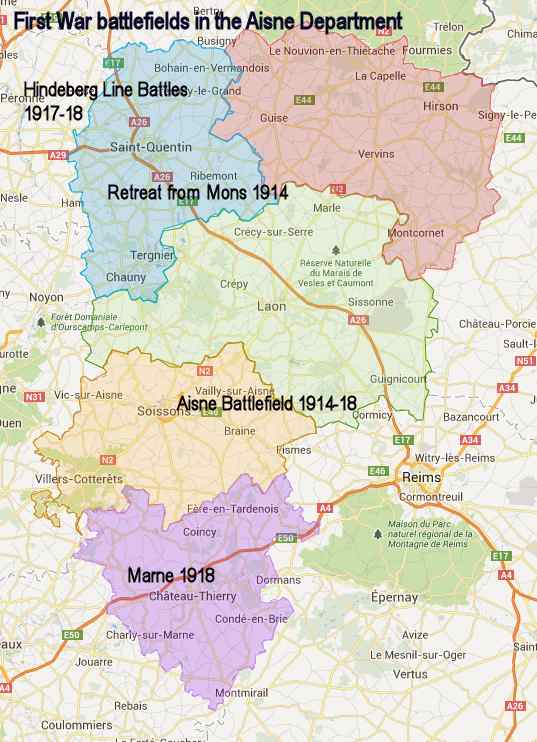
The Aisne battlefields are in some ways a forgotten corner of the Western Front. Most British visitors to the Western Front tend to focus on the battlefields of Flanders and the Somme, or hurtle across it en route to Verdun, the iconic French battle. Yet the battlefields in the Aisne, the bordering department south of the Somme Region, play a significant part in the development of the Western Front, have a special place in the story of the British Expeditionary force and are the resting place of several thousand British soldiers.
The Department of the Aisne forms an inverted triangle with St Quentin near the top left corner and the town of Château Thierry near the base. The northern half of the department is part of the Picardy plains. The southern half is much hillier and cut by the Oise, Aisne and Marne rivers flowing East to West. Battlefields tend to be determined by physical geography rather than administrative regions. Thus the department plays an significant role in several battlefields, only one of which takes its name from the department.
THE OTHER SOMME BATTLEFIELD
There are geographic and commercial reasons why British battlefield tourists tend to miss out the Aisne. The Somme is that bit closer, and even then most British visitors focus on the battlefields around Albert, the site of the dramatic and costly first day of the Somme, and popularised in literature from Siegfried Sassoon to Sebastian Faulks. There has also been a major investment in the Somme in heritage tourism, from the development of the Thiepval interpretation centre, to the establishment of the Museum of the Great War in Peronne, and there is the well organised support for British tourists and the tourist trade. There is a risk though, that the focus on that which is easiest to visit distorts our understanding of the history and what it means.
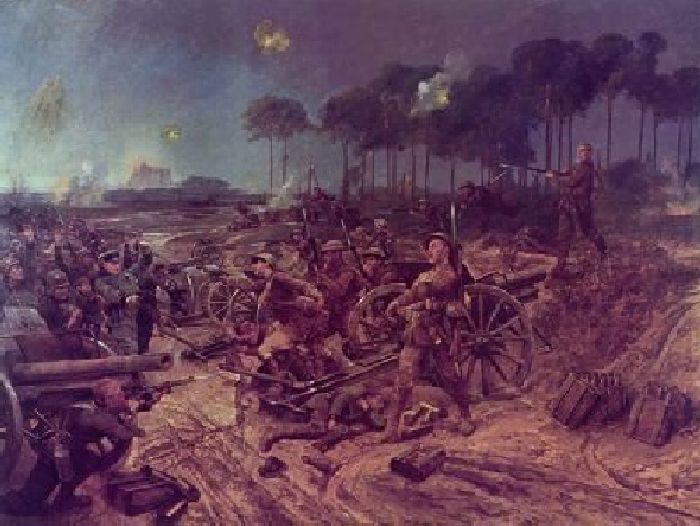
The Northern part of the Aisne department centres on the town of St Quentin. This area tells a different story of the battles we know as the Somme. The most obvious features are the remains of the Hindenburg line, the fortified line created due to the high cost to the Germans of the battle of the Somme. We don’t often see the 1916 Somme battle as a “victory”. The huge investment in developing the Hindenburg line and the spiteful destruction of everything of possible value in the land they evacuated indicates that the Germans saw the Somme as a defeat. This area included the sites of actions in the advance to the Hindenburg line in March 1917. The village of Francilly-Selency includes reminders of this in the monument to the 2nd Battalion the Manchester Regiment which liberated the village in March 1917, in the action during which one of their officers, the poet Wilfred Owen, was wounded.
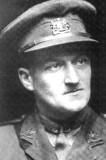
If we relied purely on popular culture, the Great war was not won but fizzled out in an Armistice, whether in a hail of bullets in no man’s land in Blackadder or with the tunnellers still under the static trenches in Bird Song. However, a visit to the Battlefields around St Quentin bears witness to the violent climax to the First World War on the Western Front. In March 1918, Manchester Hill, captured by Wilfred Owen’s battalion the previous spring, was occupied by the 16th Battalion the Manchester Regiment, understrength and exhausted from the Passchendaele campaign. This was one of the British redoubts isolated by German storm troops on the first day of the Kaiserschlacht and where its commanding Officer fought to the death, and was subsequently
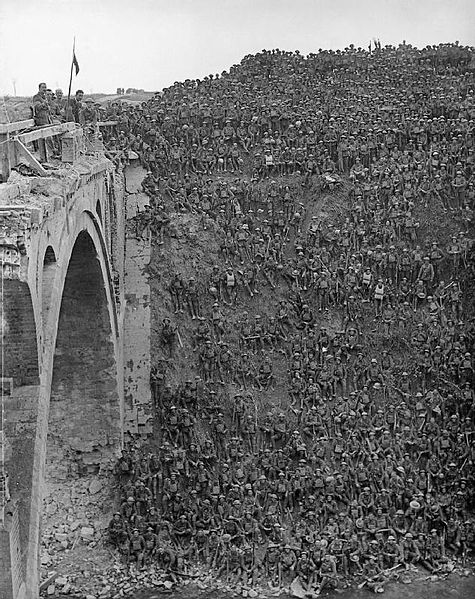
awarded the Victoria Cross. The Hindenburg Line positions north of St Quentin stormed by the British, Australian and American troops 28 September-3 October 1918, are still very visible and provide evidence of the story of the allied determination, skill and courage that overwhelmed the Germans in 1918. At this point the German defences were based on the Canal du Nord, a major obstacle protected by barbed wire and concrete bunkers. The tactical problem can be compared with the D Day landings. The bridge at Riqueval, seized by Captain Charlton and nine men can be compared to the capture of Pegasus Bridge on D Day. It is one of the most evocative places, and captured on a camera.
The fighting did not end at the canal. The concrete bunkers of the Hindenberg line are much better preserved than the earthworks of the Somme. The BBC TV Programme ”Who Do You Think You Are?” featured Matthew Davis the descendent of William Henry Johnson VC winner seeking the story of his ancestor. http://www.bbc.co.uk/news/magazine-23109590
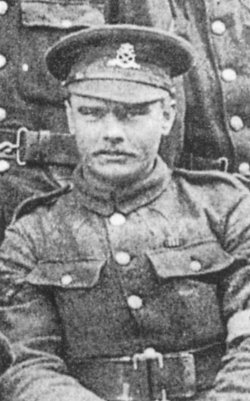
Close to here, at Mannequin Hill, N.E. of Sequehart, Lance Corporal William Harold Coltman, of 1/6th Bn, North Staffordshire Regiment, carried out the actions for which he was awarded the Victoria Cross. William Coltman, whose Christian beliefs would not allow him to kill another man was Britain’s most highly decorated serviceman of the First World War ( 1914-1918 ). In the last two years of the war he was awarded the Victoria Cross, Distinguished Conduct Medal twice, and Military Medal twice, acting as a stretcher-bearer.
THE AISNE – THE BIRTH OF TRENCH WARFARE

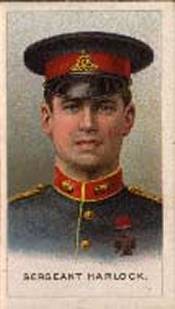
South of Laon is the area of the Aisne battlefields. The department included the battlefield is bordered by the city of Soissons in the West and Berry au Bac in the East, and stretches as far south as the River Marne and the city of Laon in the North. The countryside is a little more alien for the British visitor. The Somme Battlefields are geologically similar to Southern England and the rolling countryside and large fields are similar to the landscape of Hampshire. Much of the fighting centred on the high ground North of the river Aisne. The heights are often referred to by the name of the road along the heights, the Chemin des Dames.
The War first came to the area in September 1914 as the French and British armies fell back south pursued by the Germans. The German Schlieffen plan finally unravelled in the battle of the Marne between 5-12th September 1914 and the Germans pulled back. When the allies advanced north many could be forgiven for thinking that this war was nearly over. There had been an advance, a big battle and now the invaders were in full retreat. But, when the British Expeditionary Force (BEF) crossed the river Aisne, they found the Germans dug in on the spurs on the high ground overlooking the rive Aisne and supported by plentiful artillery. Despite heroic efforts in over a week of fighting, the BEF were unable to dislodge the Germans and both sides had started to dig trenches. Field Marshal Sir John French, the commander of the BEF wrote to the king “I think the battle of the Aisne is very typical of what battles in the future are most likely to resemble. Siege operations will enter largely into the tactical problems – the spade will be as great a necessity as a rifle”
There is a lot to see in the area from the BEF experience on the Aisne. The ground itself is evocative, and much as it was in 1914. You can still see the bridging site where the Royal Engineers bridged the river next to the damaged bridge. The story of the BEF can be traced on the landscape and past the cemeteries with the reminders of the costs.
THE CHEMIN DES DAMES –1917 THE CALVARY OF THE FRENCH ARMY
The Chemin des Dames area was the site of the disastrous Neville Offensive in May 1917. The newly appointed commander of the French Army, General Robert Neville, thought that he had discovered the secret of the offensive based on the experience of successful limited attacks on the Somme and Verdun. He massed hundreds of guns and the cream of the French army, including tens of thousands of African soldiers. Unfortunately for Neville and the French army, the Germans had tunnelled deep into the ground, developed defences in depth and found out when and where the attack would take place. After several days bombardment the attack started under atrocious weather conditions, for May. After 135,000 casualties the French troops had had enough. There were mutinies in several regiments. They were strikes really, with soldiers protesting about ill planned attacks, poor food and no leave.
The saviour of Verdun, General Petain was appointed as Commander in chief of the army. He is credited with restoring discipline and confidence to the French Army. He did so with a mixture of carrot and stick. He instigated improvements in pay and leave arrangement, and perhaps most significantly, he cancelled further major offensives. This allowed the French army to recover its confidence in its commanders through a series of carefully planned and executed limited offensives. One of these, in November 1917 took place in the area around Fort Malmaison on the Aisne and resulted in the Germans withdrawing from the Chemin des Dames, the objective on the first day of the Neville offensive. The other implication of the French Army mutinies was that the burden of warfare on the West would have to be borne by the British until the American army could be mobilised and brought to Europe.
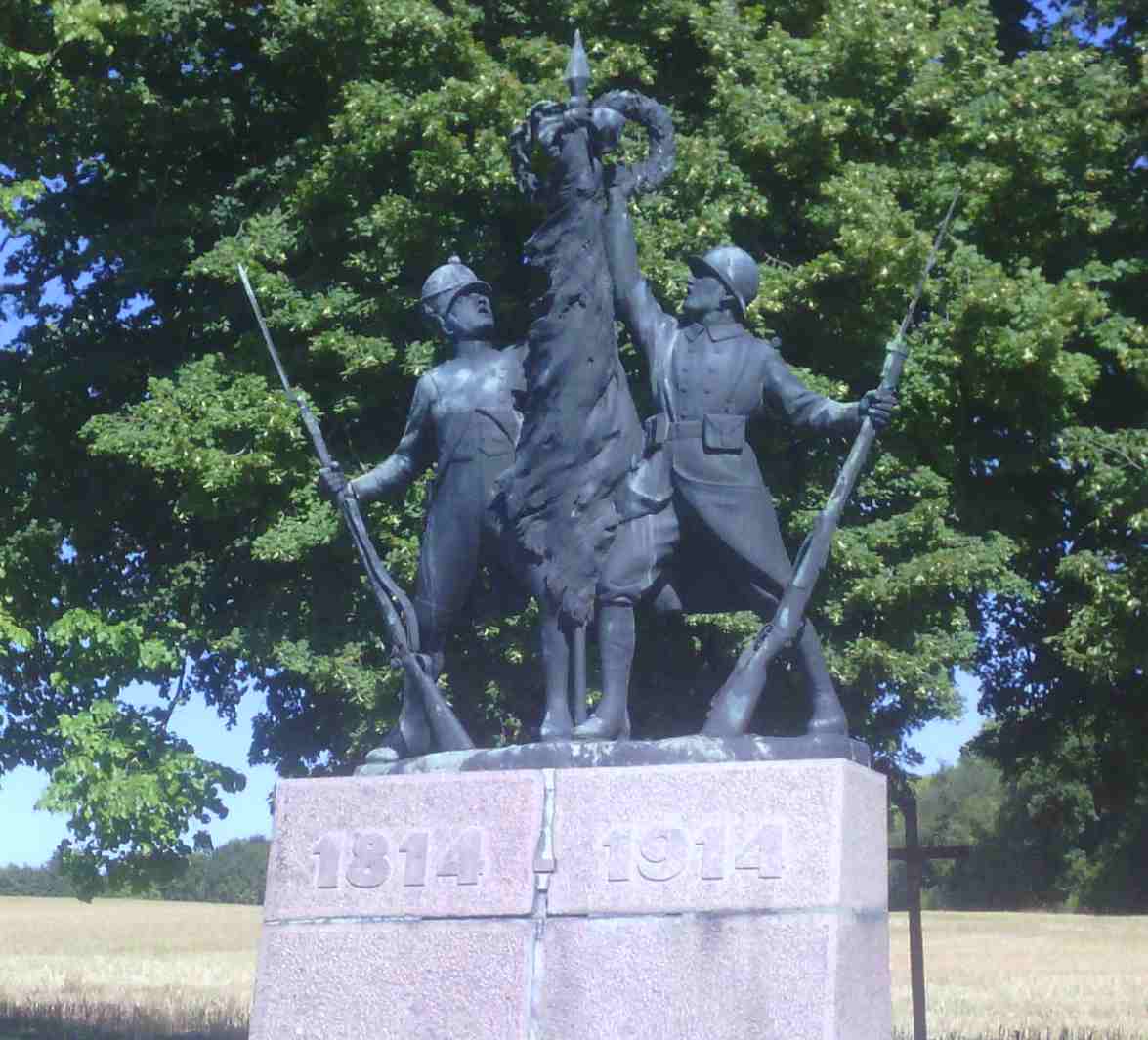
Arguably the 1917 mutinies had another legacy, in the French army of the Second World War. There is a comparison with Verdun. Verdun is a story of determination and sacrifice characterised by “They shall not pass”. The Chemin des Dames is where the French army reached the limits of endurance. It can be characterised by the bitter words of the Chanson de Craonne. ” It’s in Craonne up on the plateau That we’re leaving our hides ‘ Cause we’ve all been sentenced to die. We’re the ones that they’re sacrificing.”
There is a lot to see on the Aisne battlefield from the 1917 battles. The battlefield itself, like much of the

area around Verdun was deemed to be too devastated to be restored for agricultural use and designated a “Red Zone.” Although subsequently much agricultural land has been recovered, there are still tracts of the battlefield preserved as it was at the end of the First War, with the ruins of abandoned villages such as Craonne. There are also plentiful interpretive panels and panoramas relating the landscape of the battlefield. One focus for interpretation is the Cavern de Dragons, a quarry that became the scene of underground fighting. This contains an imaginative museum and guided tour.
There are also some evocative memorials each of which tells something of the French army. One memorial has a statue of a French soldier of 1814 alongside one of 1914; a reminder that this was also the site of one of Napoleon;’s last victories.
 A group of elegant dark statues represents the spirits of the African soldiers who suffered so heavily in 1917. There is also a memorial to the first use of tanks by the French Army at Berry au Bac.
A group of elegant dark statues represents the spirits of the African soldiers who suffered so heavily in 1917. There is also a memorial to the first use of tanks by the French Army at Berry au Bac.
THE BRITISH ON THE AISNE IN 1918
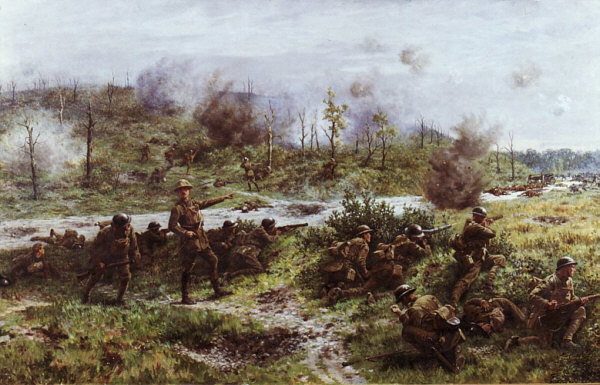

The troops that made up the Ninth British Corps were singularly unlucky during 1918. As mentioned earlier, the Germans launched a series of offensives to try to win the war before the American Army appeared in numbers. The first offensive was between St Quentin and Arras on 21st March and took the Germans to within a few miles of Amiens. The second, the battle of the Lys, in April took the Germans close to undermining the Britsh in Flanders. In these five weeks the British Army had taken over 230,000 casualties, about the same as in the four month Passchendaele campaign. Five of the most battered British formations were transferred to the Aisne front, which had been a quiet sector since 1917. And so when the Aisne became the target of the German “operation Blucher.”, the plateau of California and Craonne was defended by the 4th Battalion the East Yorkshire Regiment of the 50th Northumberland Division. The resulting battle saw the British and French pushed back 25 miles to the river Marne. The 2nd Battalion the Devonshire Regiment and 5 Battery RFA distinguished themselves by the heroic defence of the Bois de Buttes despite being attacked by storm-troopers supported by tanks. Both units were awarded the Croix de Guerre which now is worn by all soldiers in 5 Gibraltar Battery RA and the Rifles. One of the best accounts of the fighting on the Aisne is published as “The Last of the Ebb:The Battle of the Aisne, 1918” by Sidney Rogerson Greenhill Books/Lionel Leventhal
BIG CASTLES AND BIG GUNS

The hilltop village of Coucey has a particularly fine ruined château and the remains of town walls. But it’s ruin is a story of the First World War. Before 1914 the château of Coucey was the largest in France and a major tourist destination. But in 1917 it lay in the zone that the Germans were planning to abandon and was destroyed in what in retrospect seems spiteful vandalism. On the outskirts of Coucey is a different sort of structure. In the forest is a concrete emplacement for a giant gun used by the Germans for shelling Compiegne 20 km away.
THE 1918 BATTLEFIELDS OF THE MARNE – WHEN THE AMERICANS SAVED PARIS FRANCE AND WON THE WAR
On two occasions in the First World War the Germans nearly reached Paris. It was the high point of the German advances in 1914 and in 1918. The battles which saw the repulse of these attacks are both known as the Battle of the Marne. The turning point was the deployment of American troops on the Marne in June and July 1918. The Americans played a big part in halting the Germans on the Marne at Château Thierry, which is home to the impressive US Châteaux Thierry monument. Not far away is Belleu wood, which is where the US marines attacked in 1918. This battlefield has been preserved and it and the neighbouring US American Battle Monuments Commission Cemetery and the German cemetery are reminders of the part America played in the First World War.
In Praise of Panoramas
Just how well can you describe what you are looking at to someone else? Telling a story about the landscape is at the heart of battlefield guiding. But how sure can guides be that this audience has understood exactly what they are talking about? Just because the audience nods sagely when the guide asks if everyone understands doesn’t mean they all do. But, unless the members of the audience all know what the guide is talking about, they will go home with an inaccurate picture.
On a recent Introduction to Battlefield Guiding course we conducted an experiment to see how easy, or difficult it is for guides to identify exactly what points on the ground they are talking about. A panorama of the battlefield of Flodden was projected onto a screen. Students were asked to point out some of the locations to an audience relevant to telling the story of the Battle of Flodden. Each student was given a sheet of paper with a copy of the panorama and asked to mark on the panorama where they thought the locations being described were. The results are shown in the illustration 1.

The overall results are shown in Illustration 1. The students describing the locations lettered A-F were given a sheet with one of the pink lines. The yellow,and black letters A-F show where other students positioned these points. This is a bit crowded, but as you can see, there is quite a bit of variation in almost each location. Some locations are easier to describe than others. We should not be too critical of our experimental subjects. The task might have been easier if the audience members had a map in front of them. However, not everyone can read a map and relate it to the ground.
Although the task of indicating positions on the ground is a common and obvious task for a guide, it asks a lot of the collective brains of the guide and audience. We are asking someone to look at a visual image and describe it in words which the audience then uses to construct their own image. (See Illustration 2.) If we want to understand what some artist such as Constable saw it is far easier to look at the Hay Wain than to visualize the work from a description. Visual and verbal communication are processed in different ways, and even by different parts of the brain. Words may have a different meanings for audiences with a range of linguistic skills and vocabularies.

The answer may lie in making more use of panoramas, i.e. an annotated sketch of the landscape from the observer’s position. A couple of hundred years ago, when armies were starting to become professional, field sketching was a key skill for officers. The current issue of the Sandhurst Foundation’s “Wishstream “ magazine has an article about the staff of the Royal Military Academy in 1813. Until Ordnance survey maps became common, a sketch was the norm for pointing out the ground. The National Army Museum has a water-colour that is claimed to have been used on the battlefield of Waterloo.
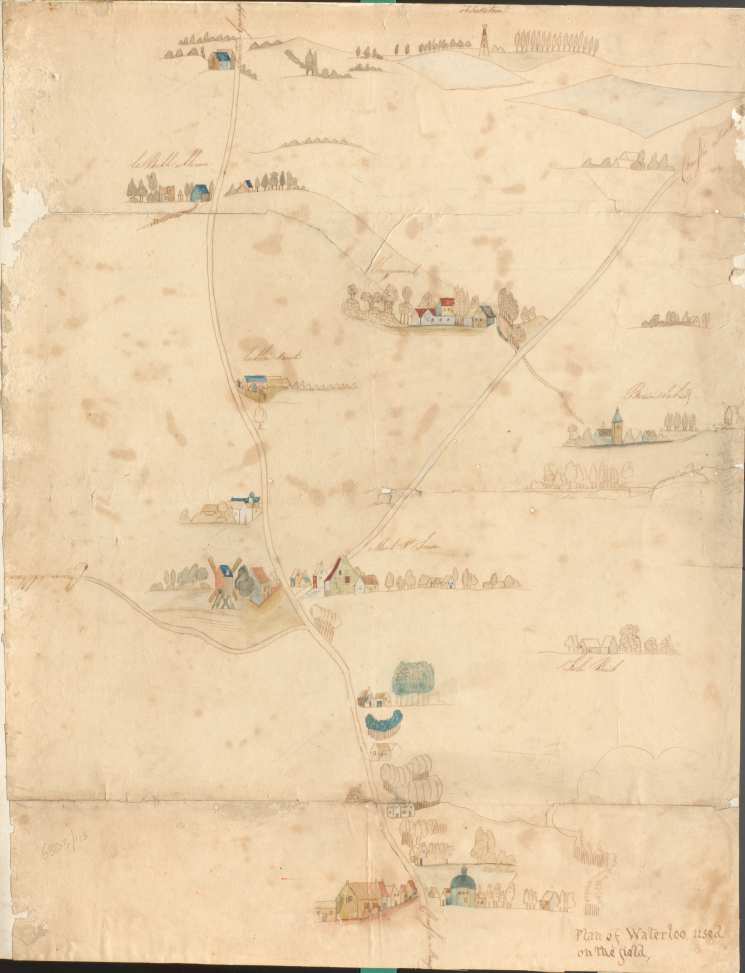
In the Second world war it was not unknown for senior officers to practice the art.

and even 1980s Cold War warriors were expected to draw an OP panorama.
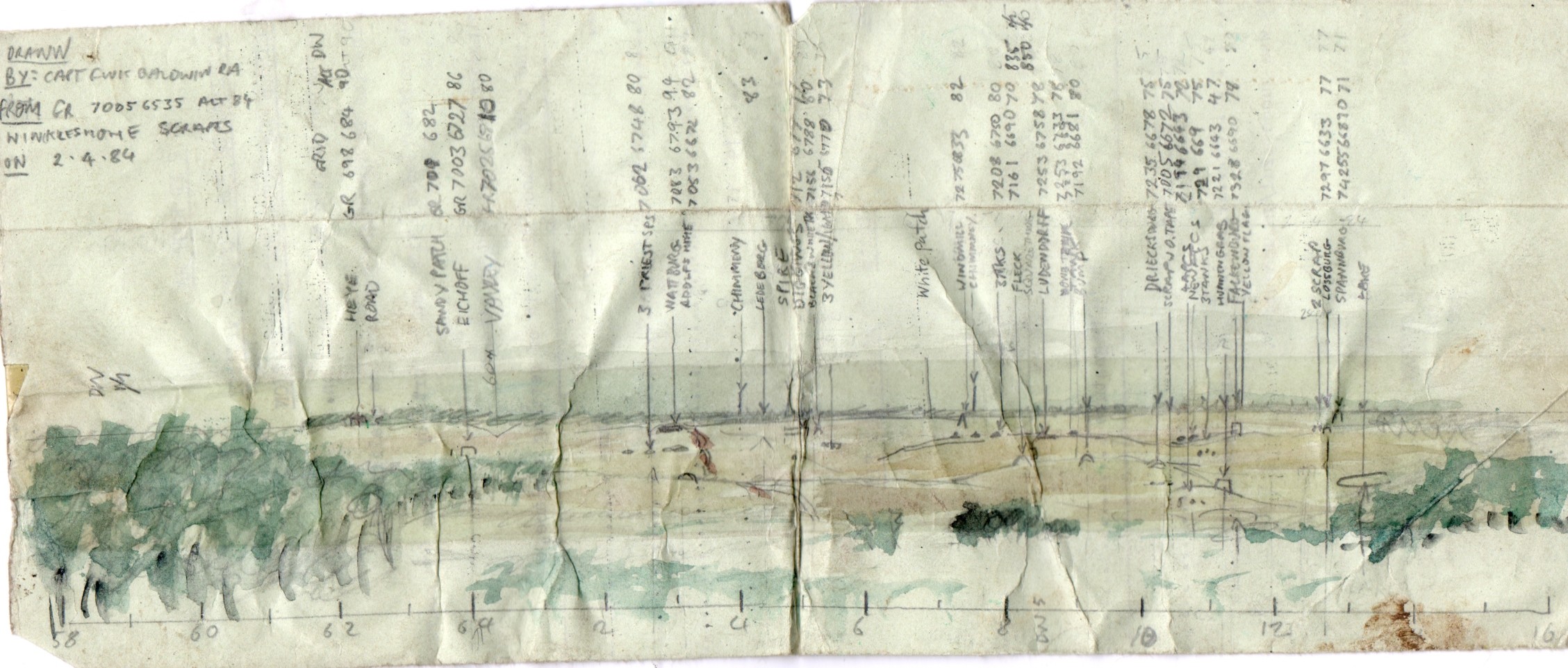
There is a secret behind Illustration 2 which means that the local guide, Clive Hallam Baker, shown addressing the Battlefields Trust Annual Conference in April 2013, can be happy that his audience know the ground as he describes the ground. The battlefield of Flodden has excellent interpretation boards showing panoramas illustrating the battle.
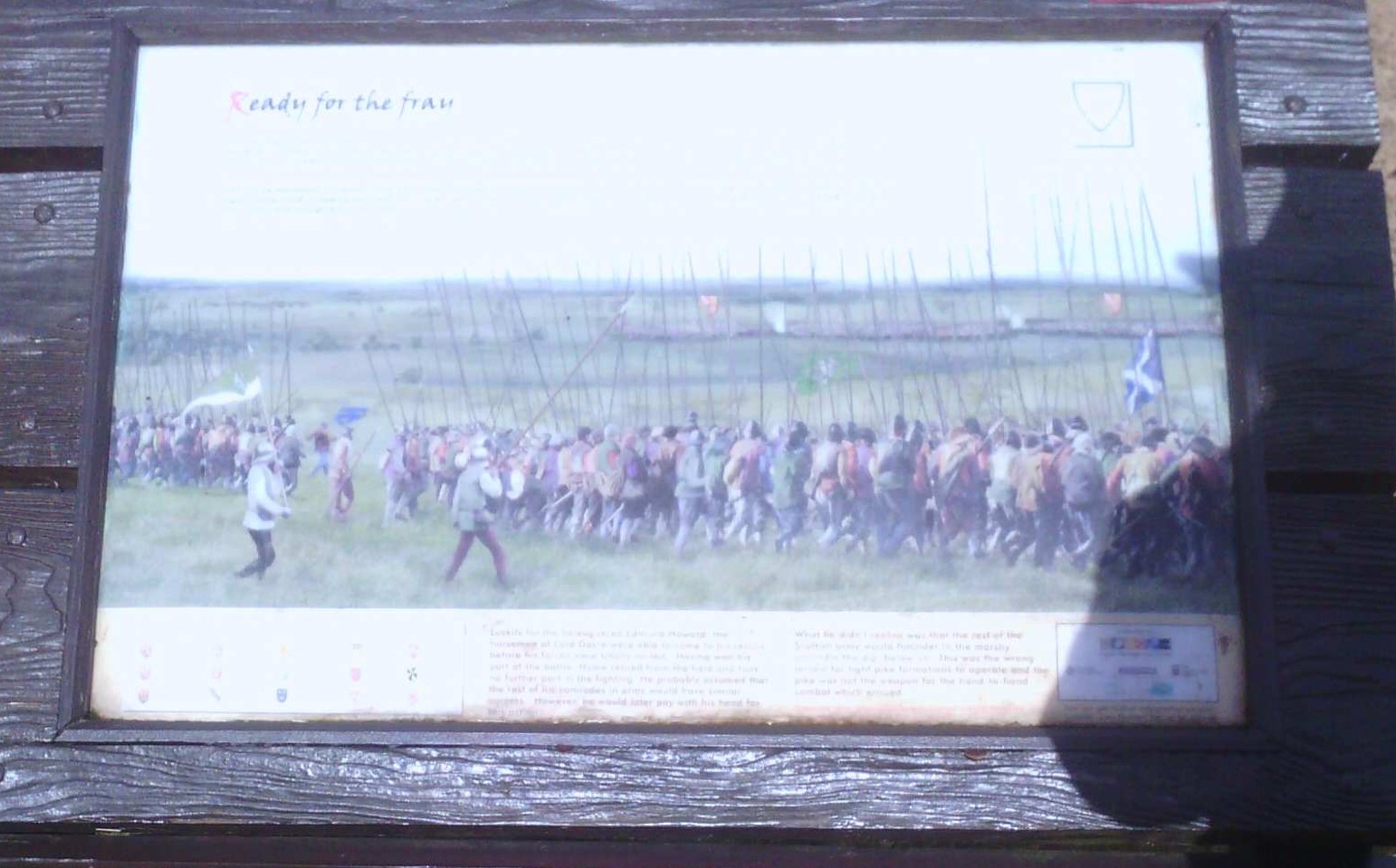
So perhaps battlefield guides should consider using panoramas as visual aids. On most occasion guides know where they will wish to stop and talk. Modern cameras, mobile phones and tablets can capture panoramas; and Google street view allows for a “Virtual recce”. The problem posed our experimental subjects would have disappeared if the audience had been given a panorama like this one, generated in 20 minutes.
If you would like to find out more about training for battlefield guides check the services I offer
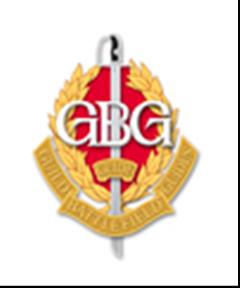
Travel to Overseas Battlefields can now be part of First World War Centenary Projects
The Heritage Lottery Fund (HLF) scheme for small community projects for the First World War Centenary announced on 16th May 2013 can be used to support travel to battlefields and memorials outside the UK.
This was not highlighted in the launch announcement nor in the newspaper reports. However, it is clear from the Heritage Lottery Fund’s own website that projects which meet certain criteria will be eligible for for HLF funding. The HLF recognises the value of travel to battlefields and memorials in deepening people’s understanding of the war and its impacts. However, any visit must be linked to activities in the UK, must enhance peoples experience and learning, while not being the main focus of a project. HLF also expects a bidder to demonstrate that the cost of the activity abroad is as reasonable as possible, that there is a genuine need for the funding, and that travel will deliver outcomes in proportion to the funding requested.
Here are the relevant paragraphs from the HLF Q&A page . (Note this page has been replaced and briefing information is now here )
Can our application include costs for travel and activity outside the UK?
Yes, if your project is based in the UK.
We will fund the cost of travel and activity outside the UK (including the cost of bringing people to the UK) if there is a clear rationale for it in the project, it contributes to outcomes for heritage, people and communities in the UK and offers value for money.
What costs can you cover outside the UK?
We can consider any costs that are associated with your project activities – this could include for example, travel, accommodation, insurance, or activities in museums or heritage sites involving people from the UK.
We ask that you explore how you can make the cost of your activity abroad as reasonable as possible. For example, you could send a small group of people to explore the heritage on a research trip who could then come and feed back to the rest of the group, or you could pay to bring people to the UK to share their expertise and insights. In order to fund travel and activities abroad, you will need to demonstrate that there is a genuine need for the funding, and that the additional outcomes achieved are in proportion to the funding requested. Some questions we might ask are:
-
To what extent does the travel outside the UK enhance people’s understanding and learning, or broaden their perspectives of the war?
- Could this level of understanding be achieved in a lower-cost way?
- Will the travel and activity abroad enhance the long-term outcomes of the project? For example, will it result in long-term relationships which will result in new understandings of the war and its impacts?
- Are you contributing any partnership funding?
Can we get a grant to take a group to visit the former battlefields and cemeteries in Europe?
We recognise the value of visiting a site, and that this can deepen people’s understanding of the war and its impacts. You should show that a visit is linked to activities in the UK, and that it will enhance people’s experience and learning. The visit should not be the main focus of a project.
If the main activity and cost in your project is visit abroad, then the project is unlikely to offer good value for money.
Can HLF provide funding for projects outside the UK?
No. Money raised through the National Lottery can only be invested in projects based in the UK.
This is very welcome news and should enable communities to draw on the battlefields themselves as a resource for the centenary commemorations. The Observation Post has been making the case for this funding ever since the Great War Commemorations were first discussed in 2011 and established the Men Behind the Memorial project to draw attention to the potential of the battlefields to develop our understanding of the War and its context.
Baldwin Battlefield Tours is developing a Centenary Advisory Service to support Community Groups with military historians and other resources to enable them to make the most of the Battlefields as part of their First World War Centenary Projects.
City Lit “Introduction to Battlefield Guiding” Summer School Course 6th &13th July 2013
The London based adult education organisation CityLit are running 1 two day “Introduction to Battlefield Guiding” course as part of the 2013 Summer School. The course tutor is Frank Baldwin, owner of the weblog www.theobservationpost.com who put forward the course. It is aimed at anyone who is interested in becoming a battlefield guide.
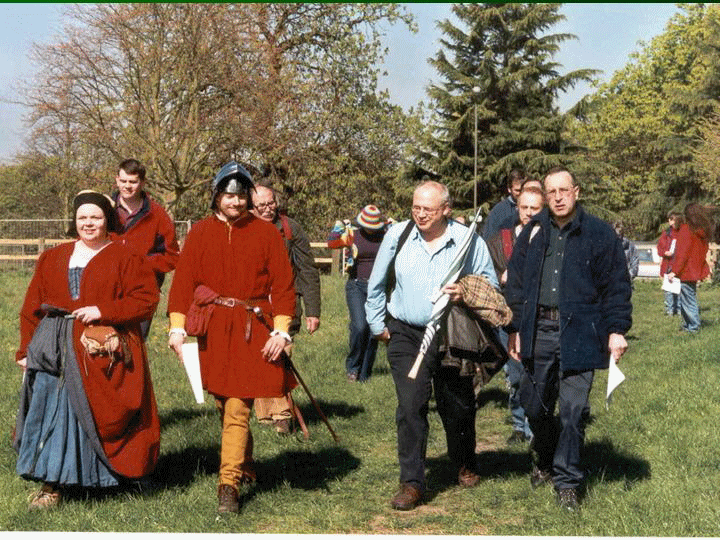
What sort of people are interested in becoming battlefield guides? Historically battlefield guides have either been veterans, historians or a sub set of professional tour guides who specialised in military destinations. But this is no longer true. There are lots of people inspired by military historians such as Richard Holmes and Dan Snow. Since the 1980s military history has become a popular subject in Britain both with the public and as an academic subject. A lot of people are interested in military history. (About 35% of men and 10% of women if research commissioned in 2006 is to be believed)
Tourism is one of Britains’ largest export industries. We are good at this more and more travel is geared towards heritage and cultural tourism. In a life time of work which we now expect to extend to the full three score and ten this is an activity that allows someone to make money from a hobby. For most guides it is something that can be more than a hobby but less than a career. It fits well with a portfolio career.
We are also likely to need more guides too. There is a lot of potential interest generated by interest in the Great War, in particular from people and groups who will be seeking to know more about what happened to particular soldiers www.menbehindmemorials.com rather than a tour of the edited highlights of the Western Front. Britain’s own battlefield and military heritage is under developed. There hundreds of sites of battles, sieges , skirmishes and military installations with fascinating stories behind them , just waiting for a good story teller to bring them to life.
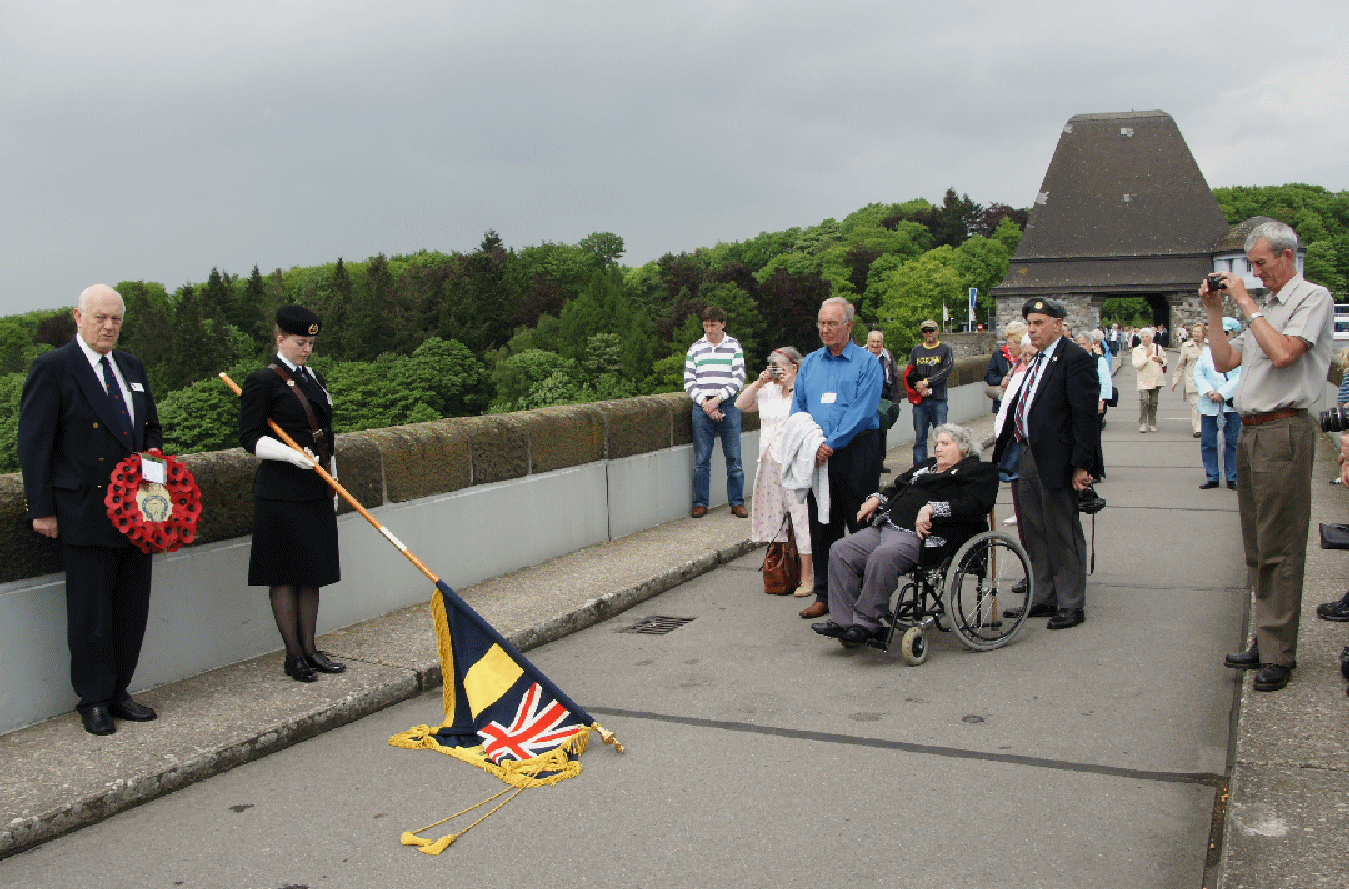
Heritage tourism is a serious industry and battlefield guides are expected to provide a professional service. Customers expect high standards from all aspects of the service they receive in an industry which is regulated to protect the public. Anyone delivering a service to the public has legal obligations, which could be painful in our litigious world. Anyone seeking to employ a guide needs to know that the guide knows their subject matter, can present information well and knows how to look after the customer, and by implication the interests of an employing tour operator.
Someone wishing to be a professional tour guide in the UK is advised to become a Blue Badge guide via the scheme managed by the Institute of Tour Guiding. This involves two years of study of the culture and heritage of particular regions through organised instruction, followed by examinations which qualify the guide to be listed as a Registered Guide, and costs around £5,000 in tuition and examination fees. While this is excellent preparation for taking visitors around the sights of Britain, it is less useful if the purpose of becoming a guide is to lead tours to the battlefields of the World Wars. It is also overkill for someone who just wants to be able to lead visitors to a local battlefield on behalf of the Battlefields Trust or a local battlefield society.

Ten years ago, in 2003, a group of battlefield guides, under the patronage of Richard Holmes and John Hughes Wilson, set up The Guild of Battlefields Guides (GBG). The aims of the Guild are to analyse, develop and raise the understanding and practice of battlefield guiding, provide an environment to meet fellow guides and share information, expertise and knowledge. Guild members seeking to demonstrate their competence as a guide undertake series of practical and written assignments that form a validation system developed by a team headed by educationalist and military historian Dr Chris Scott. Guides who pass the standard set are awarded a badge that shows that they have demonstrated their competences in military knowledge, presentation skills and customer care to their peers.
The GBG members have chosen not to seek accreditation for the GBG Validation programme by an academic body, in order to minimise the costs to members. The Guild does not provide training in the Guiding competences. It was established to validate the standard of working guides. Guides will be expected to undertake self study or develop their skills and knowledge through their work either as battlefield guides or through related skills derived from military service or academic research.
For people seeking to become a battlefield guide this presents a Catch 22 problem. How is a guide expected to gain experience? – Through work. How does a guide obtain work – though demonstrating their experience. Many prospective guides will already have a lot of the relevant knowledge and competences. However, even with good knowledge of military history, good communication skills and customer services experience, it helps to understand the terminology and the nuances of the trade.
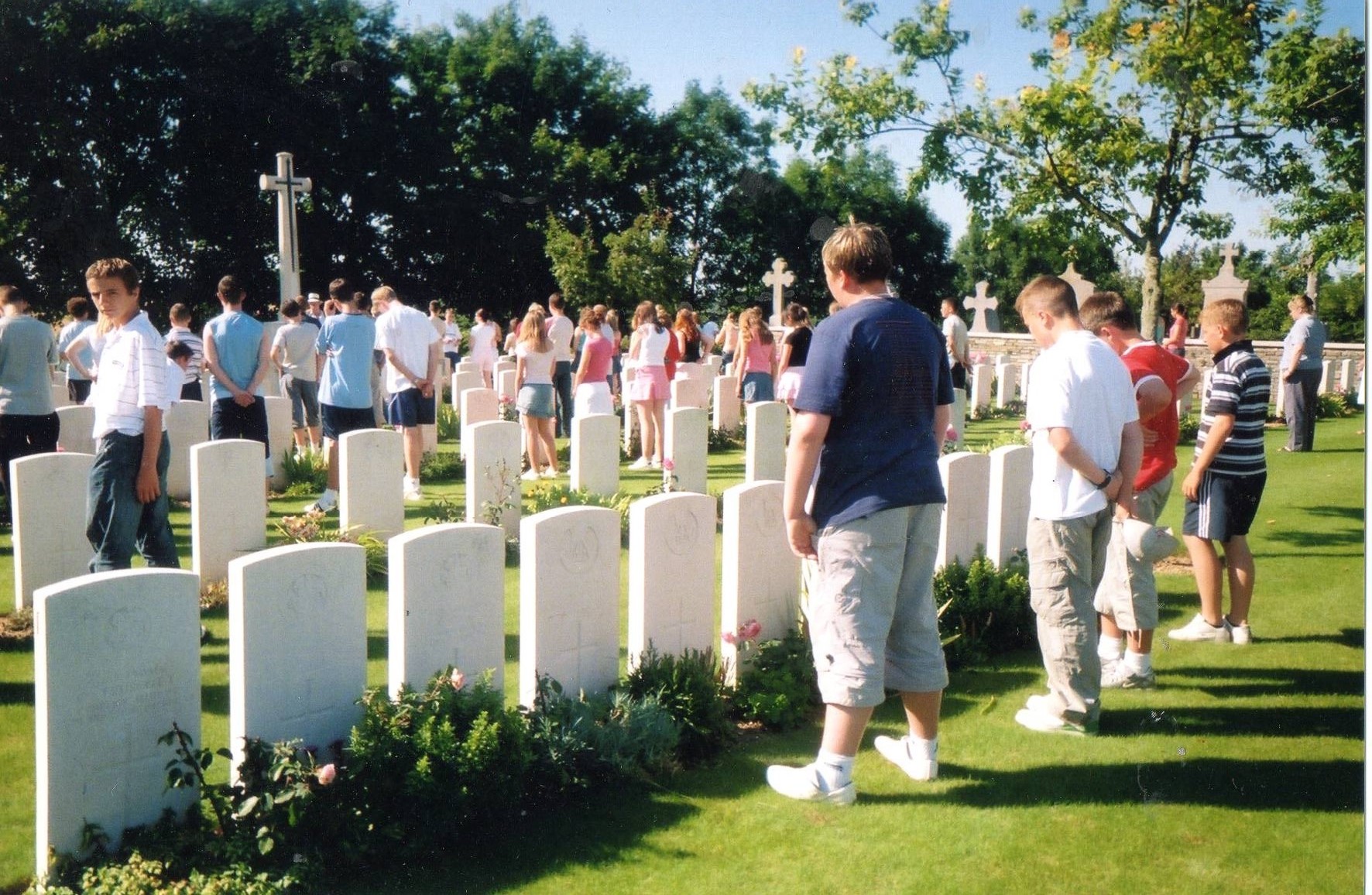
The City Lit Course is intended as an introduction to becoming a battlefield guide. It takes far longer than two days to learn the professional knowledge or develop the practical skills expected of a competent guide. It will give prospective guides an idea of the standards expected and an opportunity to assess their own training needs and prepare a plan to aquire the skills they need, through personal study or by undertaking some further training.
The course does not form part of the Guild of Battlefield Guides Professional Development Programme. Please direct any questions about the course to CityLit via the details on the course programme here

